2024 Canyon Ultimate vs Trek Emonda
Our bicycle maestro Bernard Lu compares the Canyon Ultimate and Trek Emonda, comparing the variant, features, technologies and pricing.
In this article, I’ll guide you through a comparison between the Canyon Ultimate and Trek Emonda ; both popular road bikes among cyclists.
I’ll walk through the Canyon Ultimate and Trek Emonda models lineup, their specifications, and retail pricing (USD). I’ll explain the carbon fiber technology used ( Canyon Carbon Fiber vs Trek OCLV ), and unique frameset features for each bike.
The goal is to help you get a better understanding before you make your final purchasing decision.

Canyon Ultimate
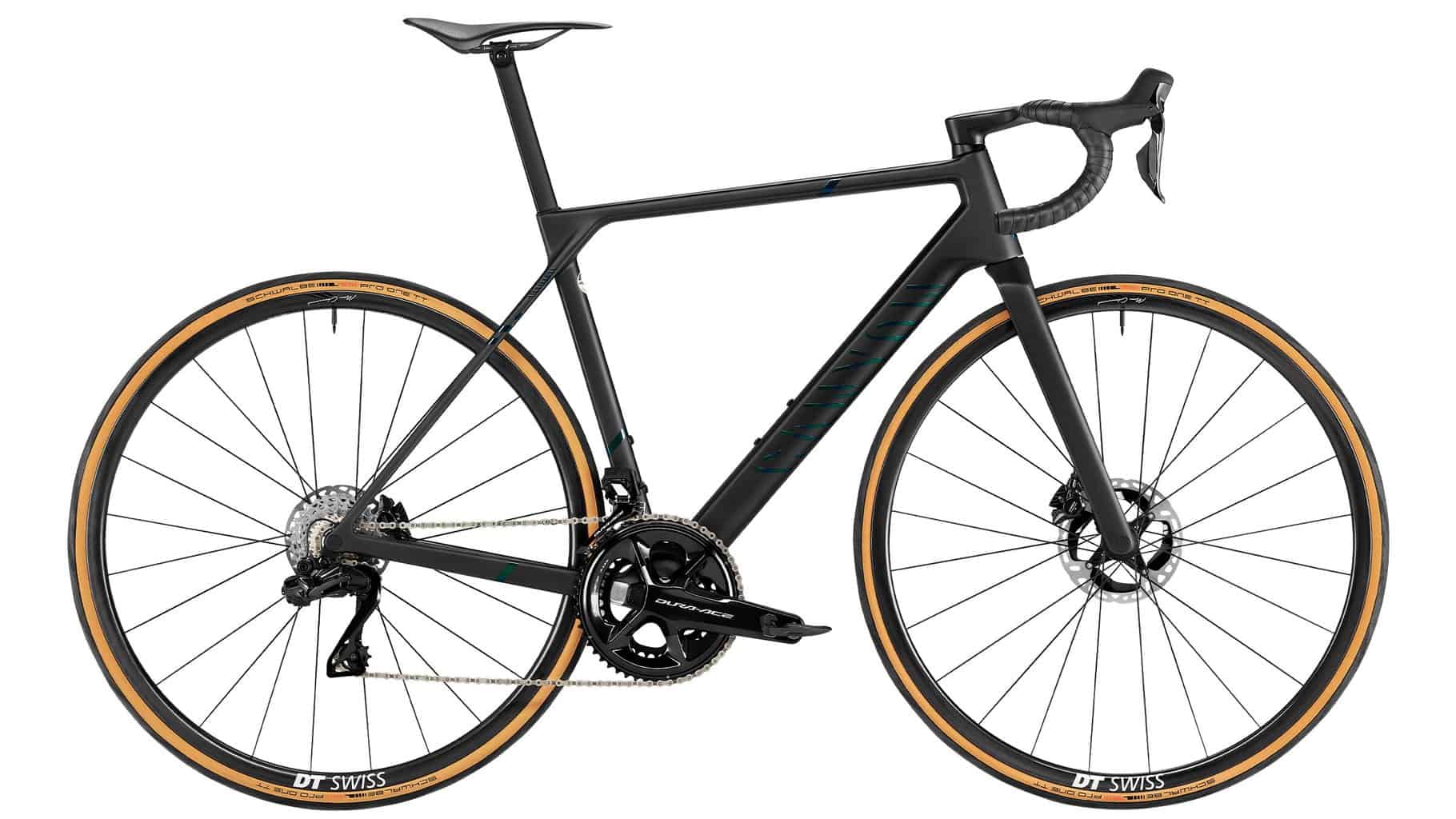
The Canyon Ultimate is an all-rounder bike. Canyon claims that the Ultimate has an unrivaled stiffness-to-weight ratio, debunking the myth that a lightweight bike is not stiff enough to perform at the highest levels of cycling.
It’s the bike the pros rode to two World Championships and three Grand Tours wins in recent years with Alejandro Valverde, Nairo Quintana, and Richard Carapaz.
The flagship model, Canyon Ultimate CFR is the latest addition with the lightest setup weighing 6.52kg. The Ultimate CFR has the best electronic shifting groupsets from SRAM or Shimano. Next in line is the CF SLX weighing 6.98kg, and CF at 7.6kg.
Canyon Ultimate vs others
2024 BMC Teammachine SLR vs Canyon Ultimate
2024 Cannondale Supersix Evo vs Canyon Ultimate
2024 Canyon Ultimate vs Giant TCR Advanced
2024 Canyon Ultimate vs Orbea Orca
2024 Canyon Ultimate vs Pinarello Dogma F
2024 Canyon Ultimate vs Pinarello F
2024 Canyon Ultimate vs Scott Addict RC
2024 Canyon Ultimate vs Specialized Aethos
2024 Canyon Ultimate vs Specialized Tarmac SL7
Trek Emonda

The Trek Emonda is a lightweight bike for the high mountains.
The lightest Trek Emonda frame weighs less than 700g using Trek’s OCLV 800 carbon. This is the bike Richie Porte rode to his third place in the 2020 Tour de France.
The SLR is the lightest and most expensive atop the Trek Emonda models. There are six Emonda SLR options, specced electronic shifting groupsets from SRAM or Shimano.
Next in line is the SL, the mid-range, more budget-friendly option. It has the same frame design and geometry as the SLR but uses the OCLV 500 carbon instead. The groupset choices are Shimano Ultegra Di2 , Shimano 105 Di2 , SRAM Force AXS , or SRAM Rival AXS .
The Trek Emonda SLR and SL framesets are also available separately.
Trek Emonda vs others
2024 Orbea Orca vs Trek Emonda
2024 Pinarello Dogma F vs Trek Emonda
2024 Pinarello F vs Trek Emonda
2024 Scott Addict RC vs Trek Emonda
2024 Specialized Aethos vs Trek Emonda
2024 Specialized Tarmac SL7 vs Trek Emonda
2024 Specialized Tarmac SL8 vs Trek Emonda
2024 Trek Emonda vs BMC Teammachine SLR
2024 Trek Emonda vs Cannondale SuperSix Evo
Canyon vs Trek carbon fiber
Canyon carbon fiber (cf).
Canyon’s innovative approach to bike design includes the utilization of advanced carbon fiber technology, resulting in performance-oriented bicycles that offer remarkable strength, reduced weight, and improved ride quality.
Canyon employs three main types of carbon fiber in their range of bikes; CFR , CF SLX, and CF SL , each offering unique benefits to cater to your needs and budgets.
- Canyon CFR (Canyon Factory Racing) Carbon is the top-tier carbon fiber used by Canyon, designed for maximum performance. Bikes built with CFR carbon are the lightest and stiffest in the Canyon line-up, favored by professional racers and serious enthusiasts alike. The CFR series represents the pinnacle of Canyon’s engineering prowess and innovation, employing state-of-the-art materials and advanced manufacturing techniques.
- Canyon CF SLX Carbon is a step below CFR, but it still offers exceptional performance characteristics. It used to be the highest-grade carbon in Canyon’s arsenal until the introduction of the CFR series. Bikes with CF SLX carbon frames provide a perfect balance of weight, stiffness, and comfort, making them highly versatile for a range of riding conditions.
- Canyon CF SL Carbon is the entry-level carbon fiber in Canyon’s range, but it still offers excellent performance. While it doesn’t quite match the extreme weight savings and stiffness of the CFR and CF SLX grades, CF SL frames are still impressively light and stiff, providing excellent performance for the value. Ideal for cyclists who desire a high-quality, performance-oriented bike without breaking the bank, the CF SL series is a testament to Canyon’s commitment to delivering value and performance.
Trek OCLV carbon
The OCLV (Optimum Compaction, Low Void) carbon is a proprietary carbon fiber manufacturing technology developed by Trek.
- Optimum Compaction refers to the heat and pressure applied during the curing process to squeeze out excess resin and ensure that the carbon layers are compacted to the optimal density.
- Low Void refers to the goal of reducing microscopic air pockets or voids that can occur in the carbon fiber and create weaknesses.
One of the key advantages of OCLV carbon is its ability to achieve an optimal balance between stiffness, strength, and weight. Trek engineers carefully tune the carbon layup and utilize varying modulus carbon fibers to create stiff frames in certain areas to maximize power transfer while maintaining compliance in other areas to enhance comfort and ride quality.
The OCLV carbon is available in 800 and 500 series.
- OCLV 800 is the highest-grade carbon fiber used by Trek. The carbon modulus is higher in OCLV 800, making it stiffer and lighter. The manufacturing process is more refined, using more advanced carbon and resins, leading to a bike frame that provides top performance levels for stiffness, weight, and strength. OCLV 800 is used in all models with SLR .
- OCLV 500 is a lower-grade carbon but still offers a high level of performance. It has a slightly lower carbon modulus, meaning it’s a bit less stiff and heavier than OCLV 800. OCLV 800 is used in all models with SL .
It’s worth noting that the different OCLV grades don’t only refer to the material itself, but also to the manufacturing techniques used to form the carbon fiber into bike frames. Higher-grade carbon requires more precise manufacturing techniques to take full advantage of its superior material properties.
Frameset technologies and innovations
Canyon Ultimate and Trek Emonda framesets incorporate advanced technologies to enhance their bikes’ performance and ride characteristics.
Here’s an overview of the technologies used in each bike model.
Where to buy
Canyon shops.
- Canyon online shop . Available to ship to most countries worldwide.
- Trek online shops . Australia, Austria, Canada, Germany, Netherlands, United Kingdom, United States
- Trek retailers . Use this tool to find your nearest Trek retailers.

Bernard Lu has 7+ years of experience working in a bicycle shop, overseeing the retail and workshop operations. He’s a qualified bicycle mechanic who understands a cyclist’s needs and speaks the same cycling lingo.
If you meet him at the cafe, he will happily talk to you for hours about all the intricacies of bikes and cycling tech. Just buy him a coffee next time you see him.
Mr. Mamil's content is for educational and entertainment purposes only. The content is not a substitute for official or professional advice. Please do your own due diligence.
Mr. Mamil participates in the Amazon Services LLC Associates Program, an affiliate advertising program designed to provide a means for us to earn fees by linking to Amazon.com and affiliated sites. We also participate in various other affiliate programs, and at times we earn a commission through purchases made through links on this website.
Privacy Policy
Website Terms
© Mr. Mamil, 2023
- MAGAZINE OFFERS
- BIKE INSURANCE
- Best Products
- Maintenance
- Accessories
- Long-Term Reviews
- First Look Friday
- Bike of the Week
- Tech Features
- Routes and Rides
- Bike Galleries
- BikeRadar Bargains
- Buyer's Guides
- Fitness & Training
- Sizing & Fit
- Mountain Biking UK
- Cycling Plus
- BikeRadar Podcast
Best climbing bikes 2024 | Lightweight bikes for when the road points upwards
The top lightweight road bikes for climbing as reviewed by our expert testers
Russell Burton / Our Media
Simon von Bromley
The best climbing bikes are low-weight, helping you conquer the longest (or steepest) ascents.
There's a definite buzz to riding a fast, flyweight machine, and many road cyclists love the fast acceleration and responsiveness of climbing bikes.
A modern lightweight bike has to prove itself not solely through whether it's under the UCI weight limit, but also by having the aerodynamics to up your ride speed on descents and the flat.
Keep reading to see our pick of the best climbing bikes and to find out more about these lightweight bikes, check out our buyer's guide at the end of this article .
Best climbing bikes 2024, as rated by our expert testers
Giant tcr advanced sl 0 dura-ace di2.
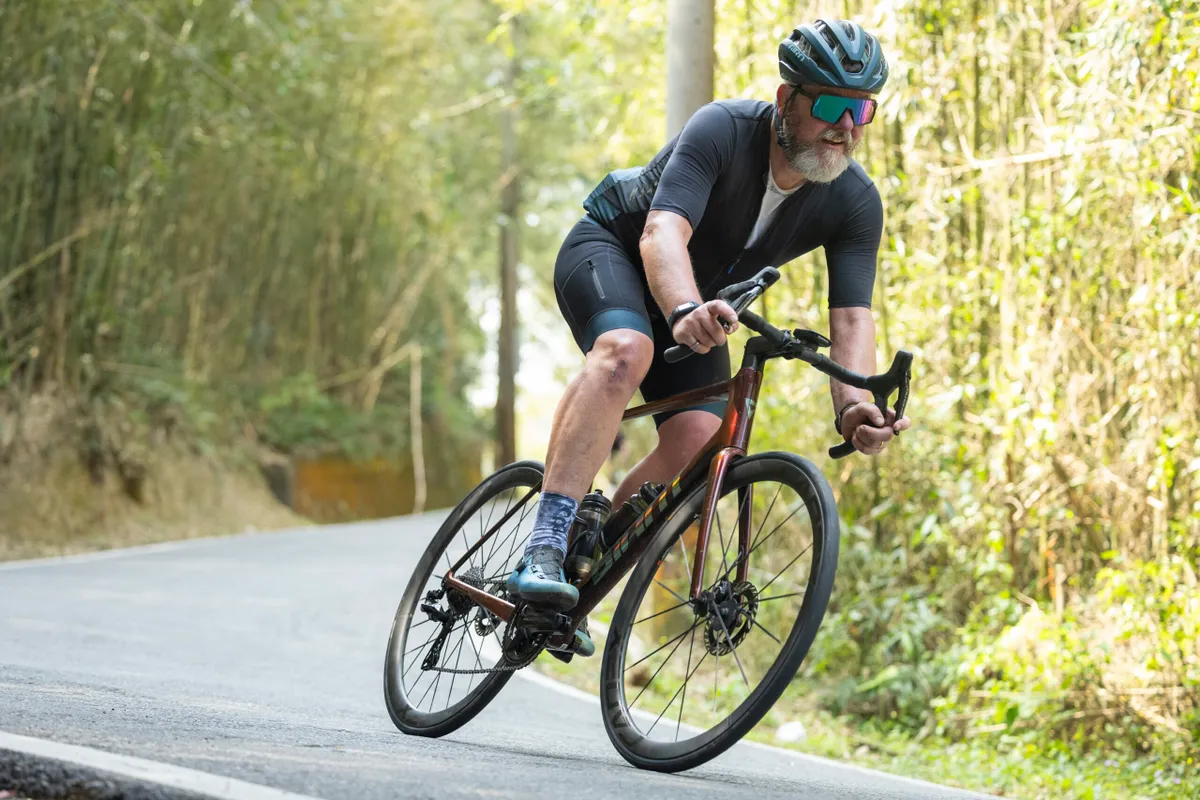
- £11,999 / $12,500 / AU$13,499 as tested
- Weight: 6.4kg (L)
- Pros: Light, stiff and responsive race bike; flawless spec
- Cons: Integrated seat post; top-spec build is pricey
The Giant TCR has long been a benchmark for race bikes and the tenth generation of the bike remains a top performer.
Although the latest version is lighter, potentially smoother and more aerodynamic, it's probably not worth upgrading from the previous generation . Unless money is no object.
While the TCR comes in many tiers to suit different budgets, the Advanced SL 0 model we reviewed is unashamedly premium. Its frameset sports an integrated seatpost rather than a conventional one, which won't appeal to everyone.
With a full Shimano Dura-Ace Di2 groupset and carbon wheels from Giant's in-house brand Cadex, it's ready to race out of the box and is properly light.
- Read our full Giant TCR Advanced SL 0 Disc review
BMC Teammachine R 01 LTD

- £14,999 / $14,999 / €14,999 as tested
- Weight: 7.25kg (56cm)
- Pros: Ride feels stiff and efficient; narrow, aero one-piece cockpit; superb spec
- Cons: Tyres aren't very robust; previous generation SRAM Red groupset
The BMC Teammachine R 01 LTD is optimised for all-out speed and it excels when you push the pace on the flat, and up and down climbs.
The aggressive ride position, narrow handlebar (only available in a 36cm width) and minimal compliance aid this goal.
This won’t be right for everyone and nor will the £15,000 / $15,000 asking price.
But BMC isn’t trying to compromise with the Teammachine R 01 LTD. It’s hard to fault this specialist speedster and it succeeds at what it’s designed to do.
When spending this much though, free bar and seatpost swaps would be welcome, as would more durable tyres.
- Read our full BMC Teammachine R 01 LTD review
Cannondale SuperSix Evo Hi-Mod 2
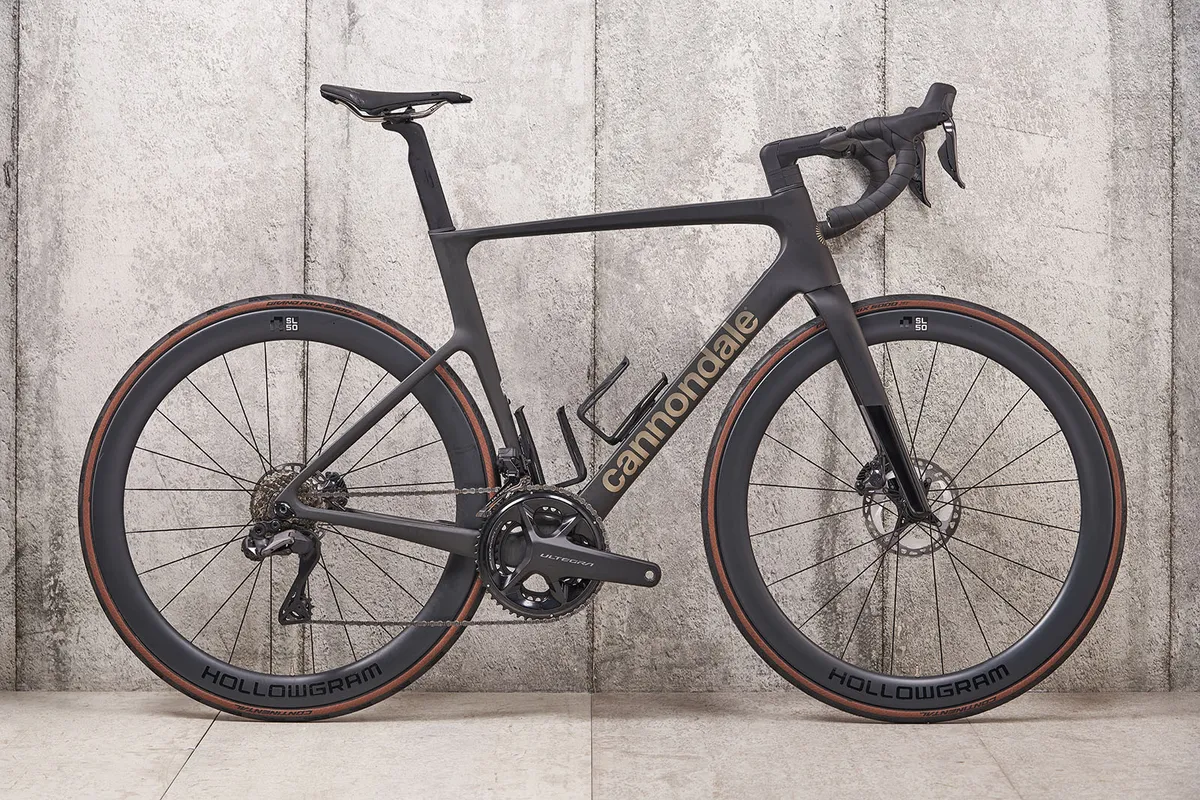
- £8,250 / $8,300 / €8,999 / AU$11,999 as tested
- Weight: 7.57kg (56cm)
- Pros: Excellent handling combined with compliance and stiffness
- Cons: Vision Trimax handlebar may not suit those with smaller hands
Now in its fourth generation, the Cannondale SuperSix Evo continues to cement itself as one of the best climbing bikes.
The new bike takes much of what made the previous versions so well regarded, but removes the often-maligned PF30a press-fit bottom bracket and replaces it with a 68mm BSA threaded model. The front-end design and down tube have also been refined and there's a new proprietary seatpost, too.
Out on the road, the SuperSix Evo balances its inspired handling with compliance and stiffness. It's a particularly adept climber, feeling assured and firm when under the rider and when you want to put the power down, it rockets forward. The new aero seatpost isn't as stiff as you might expect, offering a good amount of buzz-reducing compliance.
The Shimano Ultegra R8100 groupset on this build is BikeRadar's pick of the Japanese brand's latest groupsets and we were impressed by the newly updated flagship HollowGram R-SL 50 wheels, too.
Although Cannondale specs Continental Grand Prix 5000 tyres, they're in a 25mm width and we'd be keen to run wider rubber. We also suspect the Vision Trimax won't suit those with smaller hands because the tops are very deep.
- Read our full Cannondale SuperSix Evo Hi-Mod 2 review
Cannondale SuperSix Evo Lab71 EF Replica

- £12,500 / $14,000 / €14,499 as tested
- Weight: 7.27kg (56cm)
- Pros: Wonderful handling; balance of stiffness and compliance; lightweight frame; top-notch spec
- Cons: Computer mount and finishing kit changes cost extra
The Cannondale SuperSix Evo Lab71 is ridden at the highest level by EF Pro Cycling. You can own this exceptional climbing bike if you have 12,500 / $14,000 to spare.
Blending poised handling with a frame that's stiff but not overly so, the SuperSix Evo Lab71 EF Replica feels as fast as any on the flat.
Uphill, our tester thought there's little between the SuperSix Evo Lab71 EF Replica and specialist climbing bikes.
You're unlikely to want to upgrade the stellar spec. But it's a shame to have to shell out more for your preferred handlebar size and seatpost.
- Read our full Cannondale SuperSix Evo Lab71 EF Replica review
Cannondale SuperSix Evo 3

- £4,000 / $4,500 / €4,499 / AU$6,999 as tested
- Weight : 8.42kg (56cm)
- Pros: Still light but more aero; fine handling; better value than glitzier SuperSix models
- Cons: Skinny tyres
The Cannondale SuperSix Evo 3 proves the best climbing bikes can keep weights and prices relatively low.
At half the price of its top-end SuperSix brethren, the Evo 3 weighs slightly more but features the same aero profile and nimble handling.
The result is a mid-range bike that feels fast anywhere you ride it. However, you'll probably want to upgrade the wheels and increase the tyre width from the 25mm stock size.
- Read our full Cannondale SuperSix Evo 3 review
Canyon Ultimate CF SLX 8 Di2
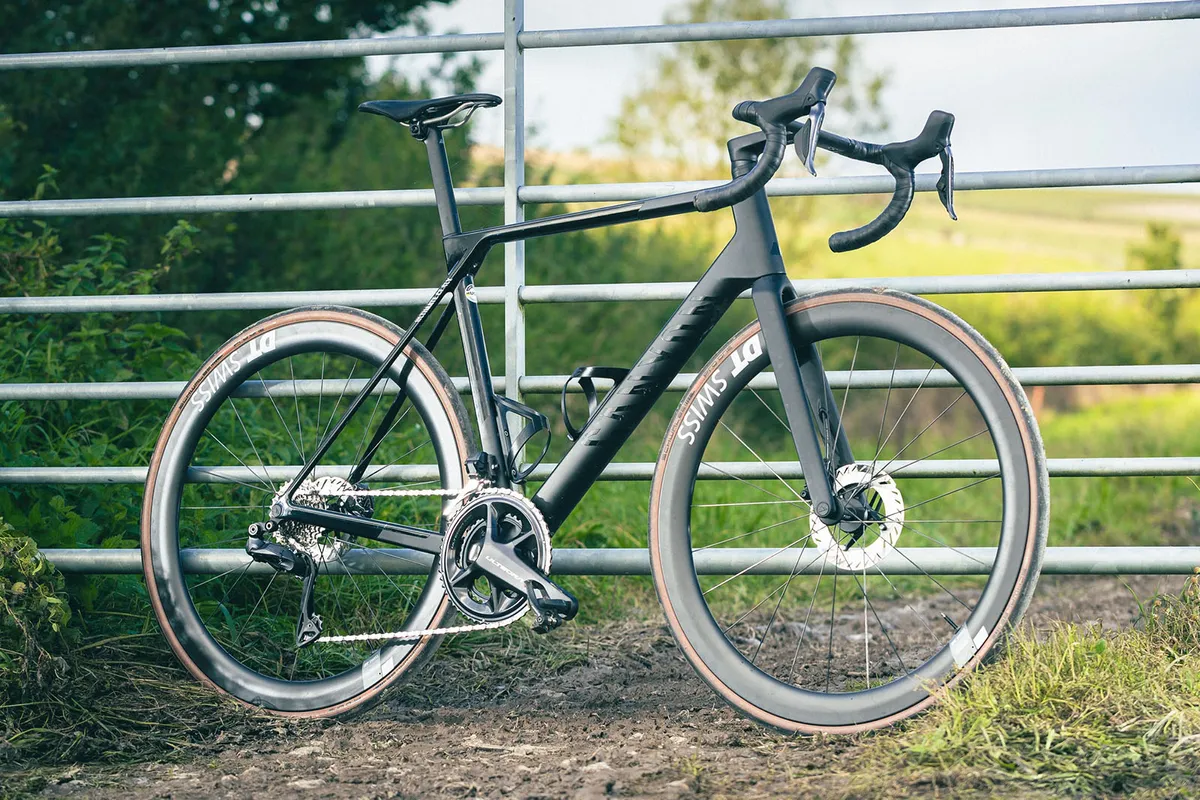
- £6,199 / $5,499 / €6,499 / AU$9,899 as tested
- Weight: 7.26kg (L)
- Pros: Cheaper than Ultimate CFR; smoother than Ultimate CFR
- Cons: Can’t customise components at purchase
The Canyon Ultimate CF SLX 8 Di2 sits below the range-topping CFR, but our tester found it to be smoother with the same handling and stiffness as the pricier model.
In short, you get better value for money with this Shimano Ultegra-equipped bike and a more balanced ride, earning it a place on the very top shelf of current road bikes.
It’s a shame you can’t customise the build at the point of purchase, which might be an annoyance if you prefer an inline seatpost.
- Read our full Canyon Ultimate CF SLX 8 Di2 review
ENVE Melee (Ultegra Di2 build)
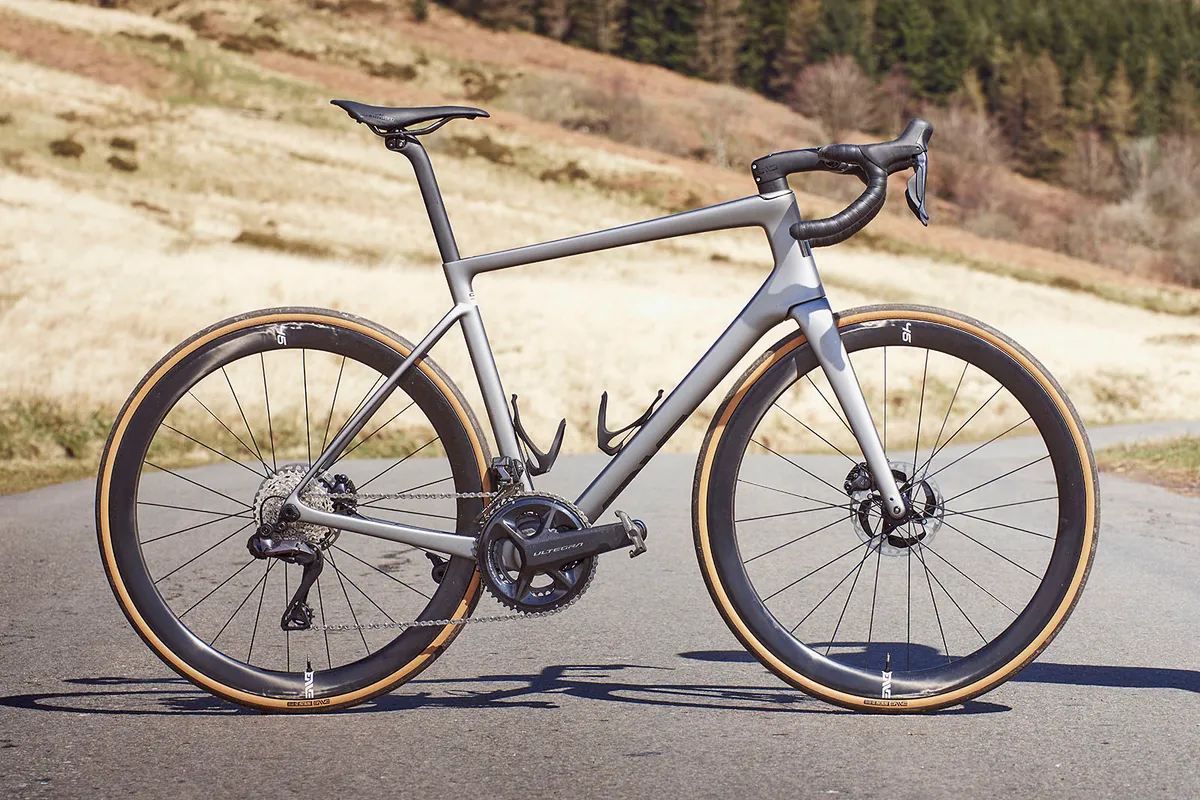
- £5,500 / $5,500 / €5,500 for frame 'chassis' | £10,400 / $12,834 / AU$19,220 as tested
- Weight: 7.8kg (58cm in this example build)
- Pros: Outstanding handling balanced with great comfort and geometry
- Cons: Expensive and you can't buy a full build off the peg
The ENVE Melee took our 2023 Performance Bike of the Year crown, thanks to its outstanding handling and balanced comfort.
The brand's second bike after the Custom Road has been aerodynamically optimised, albeit with a slightly taller ride position than you'll find on longer and lower bikes. The Melee also fully integrates its cables and hoses and uses a D-shaped seatpost.
We found the Melee to be one of the easiest-handling race bikes on the market and we were struck by how stable and composed it is in every scenario. It deals with everything with real calmness.
A stable and composed ride can sometimes be a little boring, but there's none of that here. The Melee's reaction to inputs is quick and it's unperturbed by crosswinds.
Unlike the other bikes on this list, the Melee is sold as a 'chassis' – a frame, fork, stem, handlebar, seatpost and thru-axles. You then build the bike up with your preferred electronic groupset , wheels and tyres. Even in a modest build, that means the Melee is far from a cheap proposition, but the ability to mould it into your own makes it a real winner.
Our example build came with a Shimano Ultegra R8100 groupset, and ENVE's Foundation 45 carbon wheels and SES tyres in a 29mm width. We've also reviewed the pro-level Dura-Ace Di2 spec .
- Read our full ENVE Melee review
Focus Izalco Max 9.8

- £6,599 / €6,799 / AU$10,499 as tested
- Weight: 7.9kg (56cm)
- Pros: Aesthetic design considers speed and practicality; brilliant handling; good value spec
- Cons: Not the most exciting
The Focus Izalco Max 9.8 is a fantastically versatile climbing bike that won our 2024 Race Bike of the Year crown.
Its frameset delivers low weight and aerodynamic efficiency, but Focus hasn't forsaken crucial adjustability.
Our only gripe regarding the impressively competitive spec was the omission of a power meter.
The Izalco Max does most things well, but nothing exceptionally. Whether this is a sign of sensible competence or dull conservatism is up to you.
- Read our full Focus Izalco Max 9.8 review
Lapierre Xelius SL 9.0
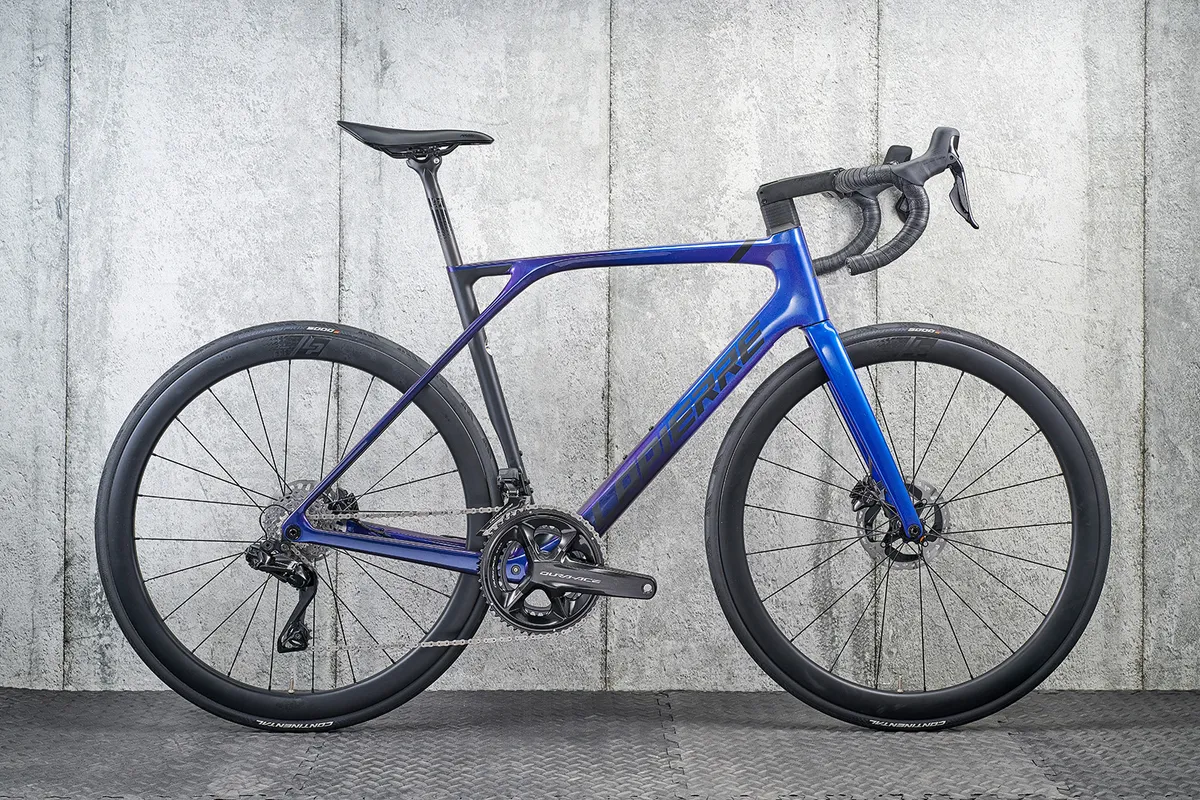
- £7,399 / €7,799 as tested
- Weight: 7.5kg (L)
- Pros: Good-value spec; racy geometry
- Cons: Limited sizing; can be twitchy in the wind
Another lightweight bike with aero features, the Xelius nevertheless stands out thanks to the design of its seatstays. The navy blue fade glitter paintjob looks stunning and the racy geometry leads to sharp handling.
If you're at either extreme of the size range, the five sizes available may not work for you though.
The spec is really good for the price, with 12-speed Dura-Ace Di2, a carbon bar and stem and Lapierre's own-brand carbon wheels with 25mm Continental GP5000 tyres that measure 27mm on the 47mm-deep, 21mm internal-width rims.
- Read our full Lapierre Xelius SL 9.0 review
Merida Scultura Team
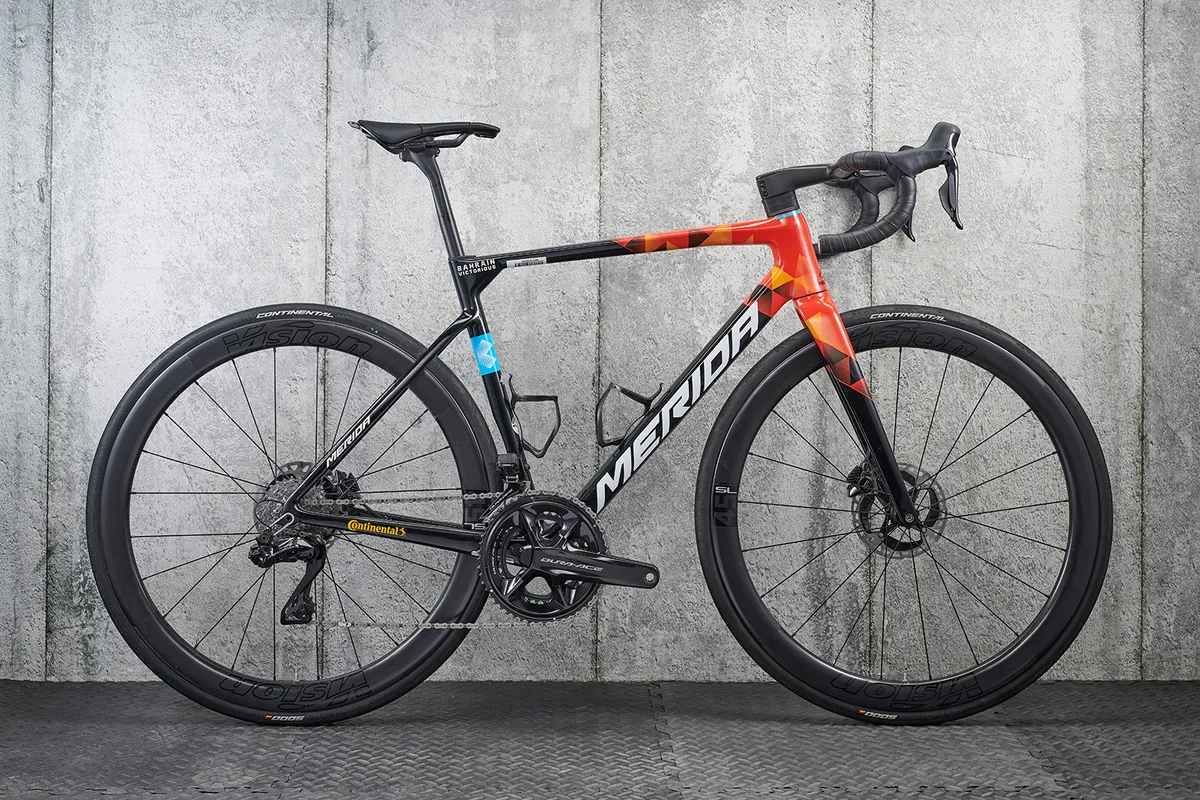
- £8,000 / €9,999 as tested
- Weight: 7.1kg (M)
- Pros: Great value for a pro-level spec; exciting ride
- Cons: Tricky fit adjustment
The Merida Scultura Team took our 2022 Performance Bike of the Year crown, thanks to its superb, exciting ride and racy handling. It's also great value, with a Shimano Dura-Ace 12-speed groupset, complete with power meter.
Merida has shaved 4.2 per cent from the previous Scultura's drag numbers, while also lowering weight slightly to a claimed 822g for a size M frame.
It's well kitted out; we particularly liked the Vision Metron 45 SL wheels, their 1,372g weight leading to low inertia on climbs. They're shod with 28mm Continental GP5000 tyres for a comfortable ride.
The one downside is the lack of narrower options for the integrated bar/stem.
- Read our full Merida Scultura Team review
Specialized S-Works Tarmac SL8 Dura-Ace Di2
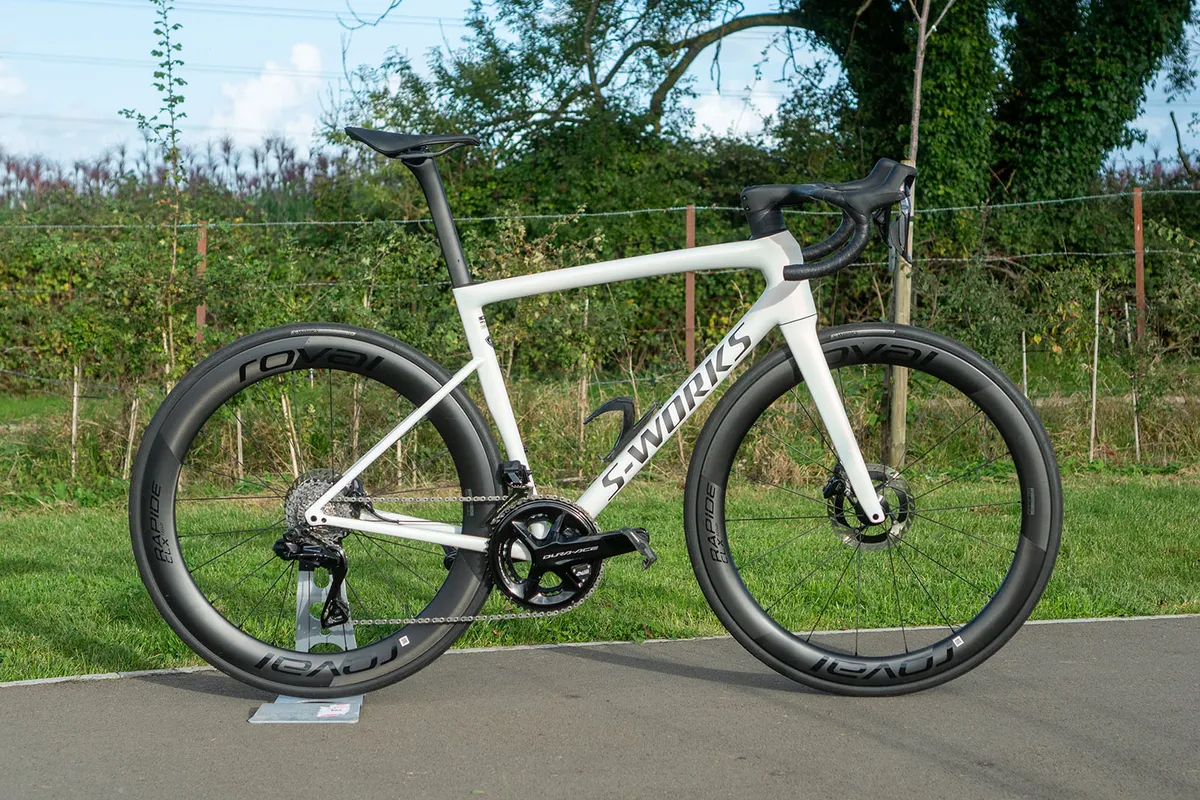
- £12,000 / $14,000 / €14,000 / AU$19,900 as tested
- Weight: 6.76kg (56cm)
- Pros: Exceptionally well-balanced handling; aero bike speed
- Cons: Wider tyres would be beneficial; cost
The Specialized S-Works Tarmac SL8 is the brand’s latest flagship road bike.
The SL8 rides like a dream with exceptionally well-balanced handling. It has the speed of an aero bike and it’s a fantastic climber.
Our tester described this no-expense-spared build, featuring Shimano Dura-Ace, as one of the finest race bikes available. But he cautioned that it doesn’t shift the goalposts far enough from the performance of the previous-generation SL7 to warrant upgrading.
- Read our full Specialized S-Works Tarmac SL8 review
Basso Diamante Ultegra Di2
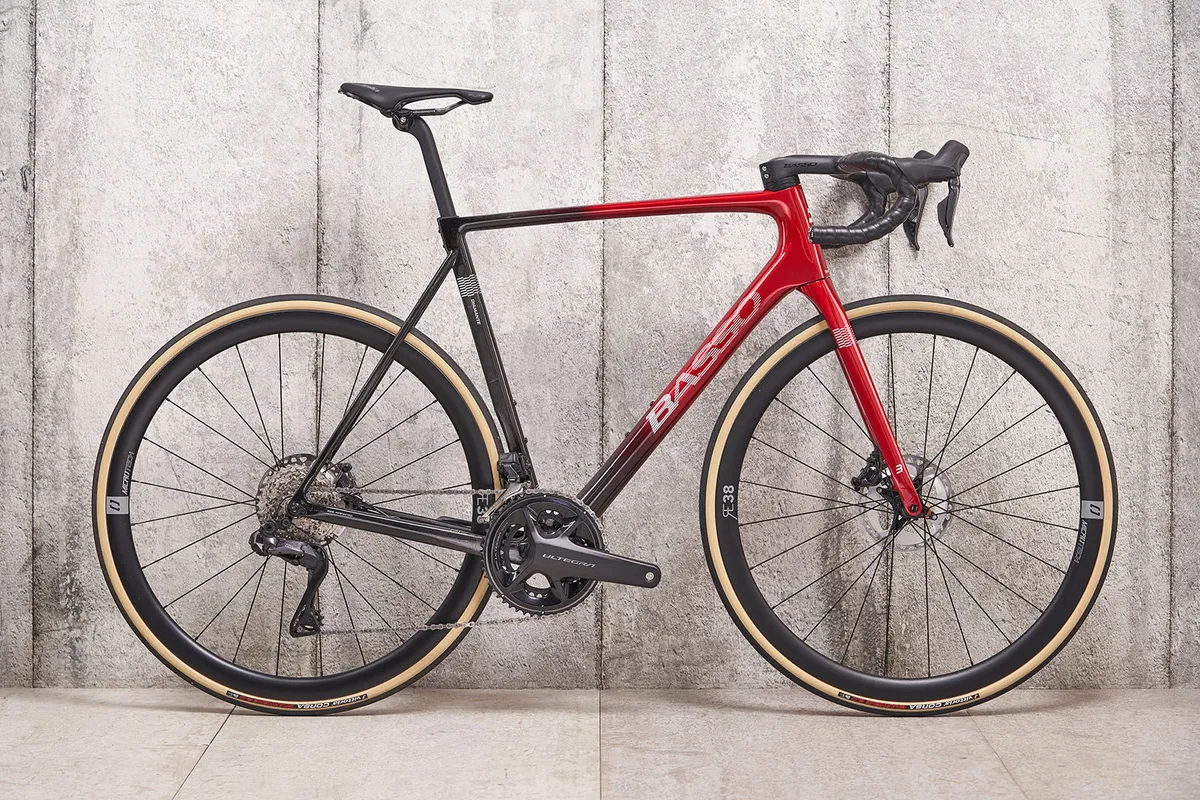
- £7,199 / €8,299 as tested
- Weight: 7.58kg (58cm)
- Pros: Sharp but stable race geometry
- Cons: Long and low cockpit won't work for everyone
The eighth-generation Bsso Diamante is a thoroughbred race bike, while remaining classic in its appearance. The tube shapes are rounded, which Basso says is designed to improve stiffness and efficiency, while minimising weight.
The geometry is in pure race bike territory – long and low, so you'll want to have a long think about whether it will work for you and carefully study the geometry chart.
That said, in testing we found the Diamante to balance its tactile handling with satisfying stiffness. It's surprisingly comfortable, too, thanks to the slim seatstays and carbon seatpost.
There's little to criticise with the Ultegra Di2 specced. The second-tier groupset delivers identical shifting and braking performance to Dura-Ace with a compelling cost saving. We also rated the Microtech RE38 wheels – many own-brand efforts can vary in design modernity, but these are on the money with a 23mm internal rim width.
- Read our full Basso Diamante Ultegra Di2 review
Bianchi Specialissima RC

- £10,999 / $13,899 / €12,749 as tested
- Weight: 6.75kg (55cm)
- Pros: Speedy everywhere; comfy; balanced handling
- Cons: Idiosyncratic looks; inappropriate tyres; deeper wheels would be beneficial
The Bianchi Specialissima RC is an all-round race bike that goes like a rocket on all terrain. In the frame, the Italian brand has meshed low weight and aerodynamics to brilliant effect.
Although the Specialissima RC's geometry is pretty racy, its handling doesn't feel skittish. High frame stiffness contributes to a sensation of efficiency as you climb, but there's plenty of compliance too.
The Specialissima RC won't be the apple of everyone's eye while more resilient tyres and deeper rims might be better for most people's riding.
- Read our full Bianchi Specialissima RC review
Canyon Ultimate CFR Di2
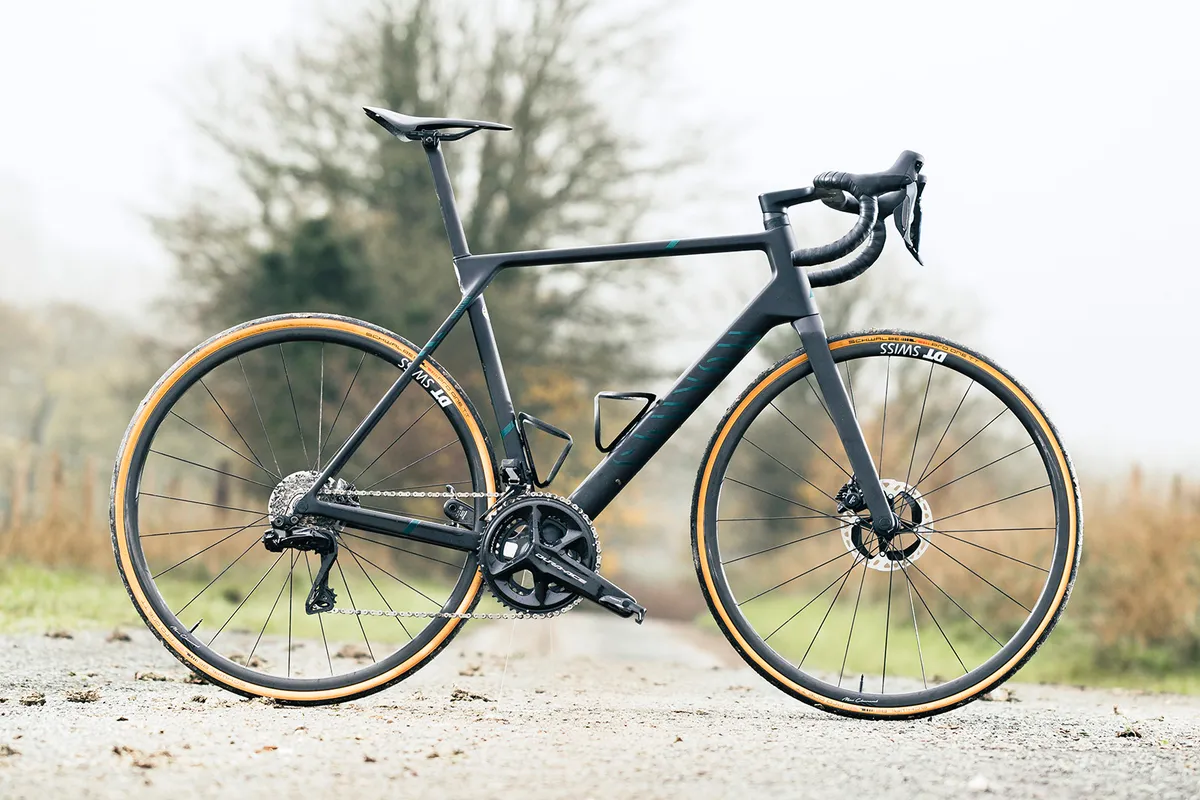
- £10,399 as tested
- Weight: 6.3kg (L)
- Pros: More versatile than ever
- Cons: Inconsistent spec
The Canyon Ultimate CFR Di2 is tremendously expensive and light at a mere 6.3kg in size large.
The top-dog Ultimate retains its race-winning stiffness, agility and climbing ability while becoming ever more aerodynamic.
However, the shallow-section DT Swiss wheels undermine the Ultimate's versatility, while the Schwalbe Pro One TT tyres are a puncture risk on all but the smoothest roads.
- Read our full Canyon Ultimate CFR Di2 review
Colnago C68
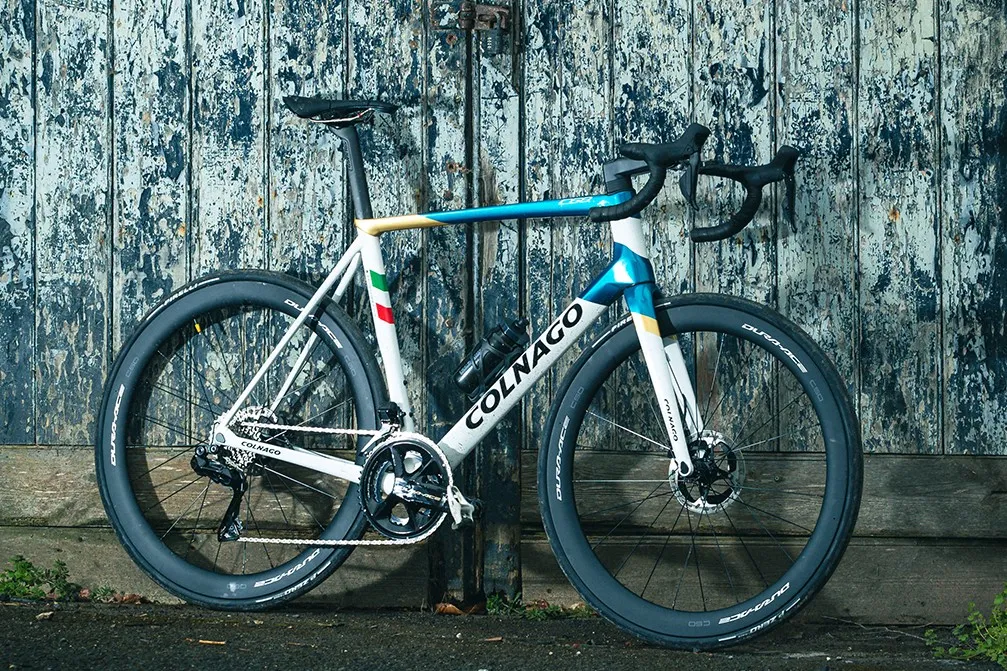
- £11,753 / $15,772 / €14,065 as tested
- Weight: 7.3kg (58cm equivalent)
- Pros: Beautifully built; superb handling
- Cons: Saddle should be better at this price
Colnago uses its lugged construction on the C68, but the tube shapes are more reminiscent of the monocoque V3R . Colnago fits its own comfortable one-piece cockpit with hidden cable routing.
The ride position is long and low, although not too aggressive for less flexible riders and leads to great handling from the taut frame.
There's a full Dura-Ace R9200 build, including C50 wheels with 28mm Pirelli tyres, although the Prologo saddle isn't the range-topping carbon-railed version. It's a great bike that merits its superbike rating.
- Read our full Colnago C68 review
Colnago V4RS
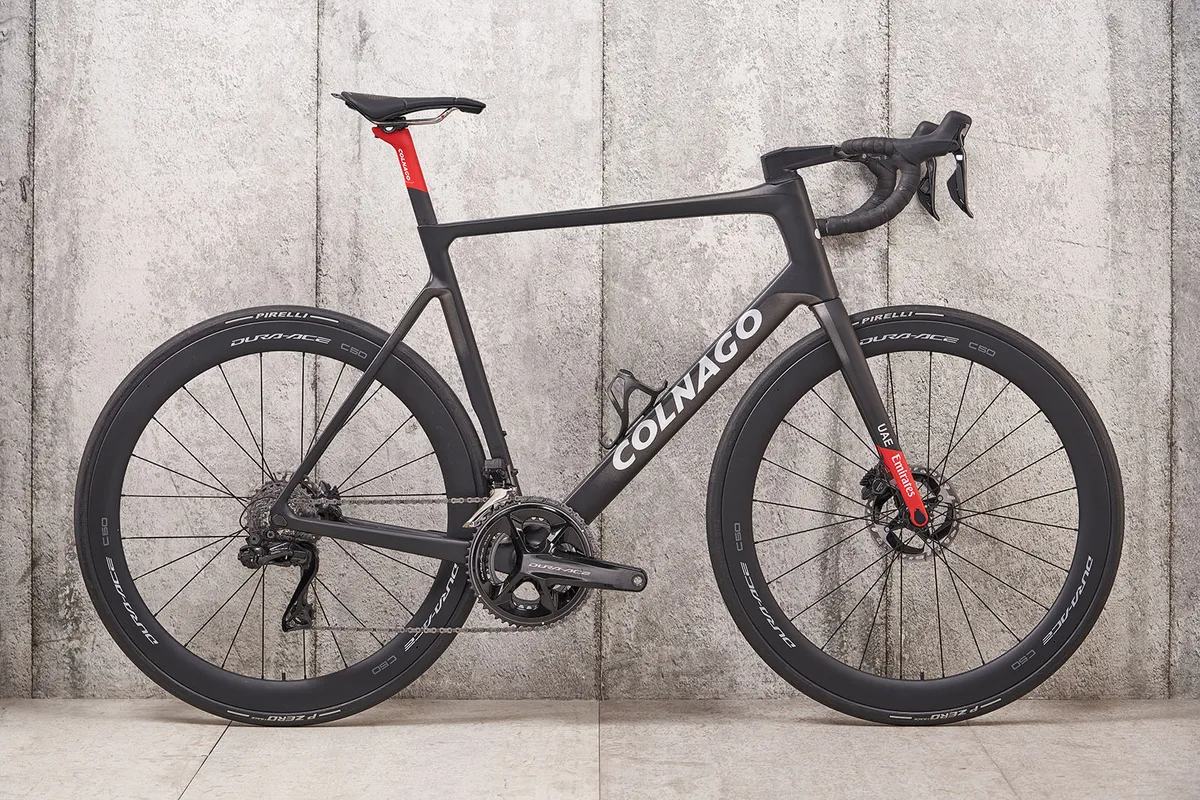
- £5,000 / €12,630 as tested (UK price is for frameset only)
- Weight: 7.23kg (57cm)
- Pros: Pinpoint handling
- Cons: Seriously expensive
Ridden by UAE Team Emirates (and perhaps most importantly) Tadej Pogačar, the V4RS is Colnago's monocoque carbon race bike, where a balance of lightness, stiffness and speed is the name of the game.
Colnago claims the V4RS is 3 per cent more aerodynamic than the outgoing V3RS and the new CC01 cockpit alone is said to be 16 per cent more aerodynamic. There are some new tube shapes too, with a reprofiled head tube, although many will be glad to hear the brand has reverted back to a round steerer tube.
Out on the road, the V4RS is unerringly poised, with direct handling and sharpness. It felt particularly confident on descents, driving hard into an apex and the bottom bracket laps up power when climbing, the bike keen to accelerate when you get out of the saddle.
- Read our full Colnago V4RS review
Factor O2 VAM

- £11,800 / $11,799 / €11,349 / AU$18,990 as tested
- Weight: 6.63kg (56cm)
- Pros: Low weight; feels efficient; brilliant climbing wheels; good ride quality
- Cons: Very costly; clincher tyres specced; quality problem
The Factor 02 VAM weighs a scant 6.63kg (56cm) thanks to its slimline frame, carbon seat post mast and low-profile Black Inc wheelset.
Predictably, its climbing performance is sensational since the O2 VAM also feels receptive to acceleration on inclines. Handling and compliance are impressive too.
On the flat, the O2 VAM feels competitive with the best climbing bikes, having taken aero inspiration from Factor's aero bike, the Ostro VAM .
The O2 VAM is expensive though. So our tester was disappointed to see clincher tyres on a tubeless wheelset and to experience issues with the bottle cage screws.
- Read our full Factor O2 VAM review
Scott Addict RC 10
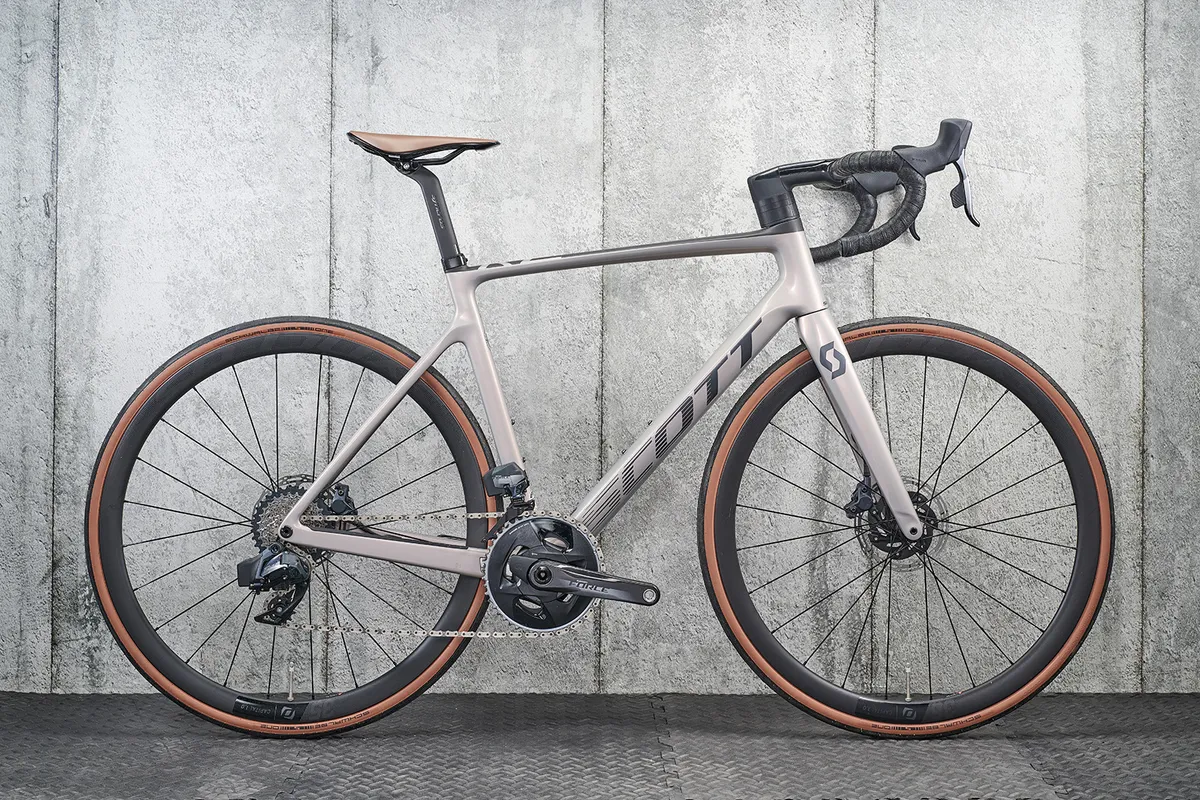
- £5,949 / $8,000 / €6,599 as tested
- Pros: Quality ride; power meter
- Cons: Middling wheels and mediocre tyres
The Scott Addict marries sharp handling with a predictable and compliant ride quality that's similar to the Cervélo R5. There's integrated cabling that works for mechanical and wired electronic, as well as wireless shifting, and it's reasonably easy to work on.
Scott includes a power meter with the SRAM Force AXS electronic groupset and you get decent, if not outstanding, Syncros Capital 1.0 35 Disc wheels with a claimed weight of 1,574g a pair.
We were disappointed with the fitted Schwalbe One TLE tyres though, with their higher rolling resistance than many of the best road bike tyres . Tyre clearance is a little narrow at 28mm too.
Although this mid-spec Addict weighs just under 8kg, you can spend a lot more and get the bike's claimed weight down to 6.7kg.
For less money, you can have the Scott Addict RC 40 . This entry-level model uses the same frameset as the RC 10 but cheaper parts.
- Read our full Scott Addict RC 10 review
Specialized Aethos Comp
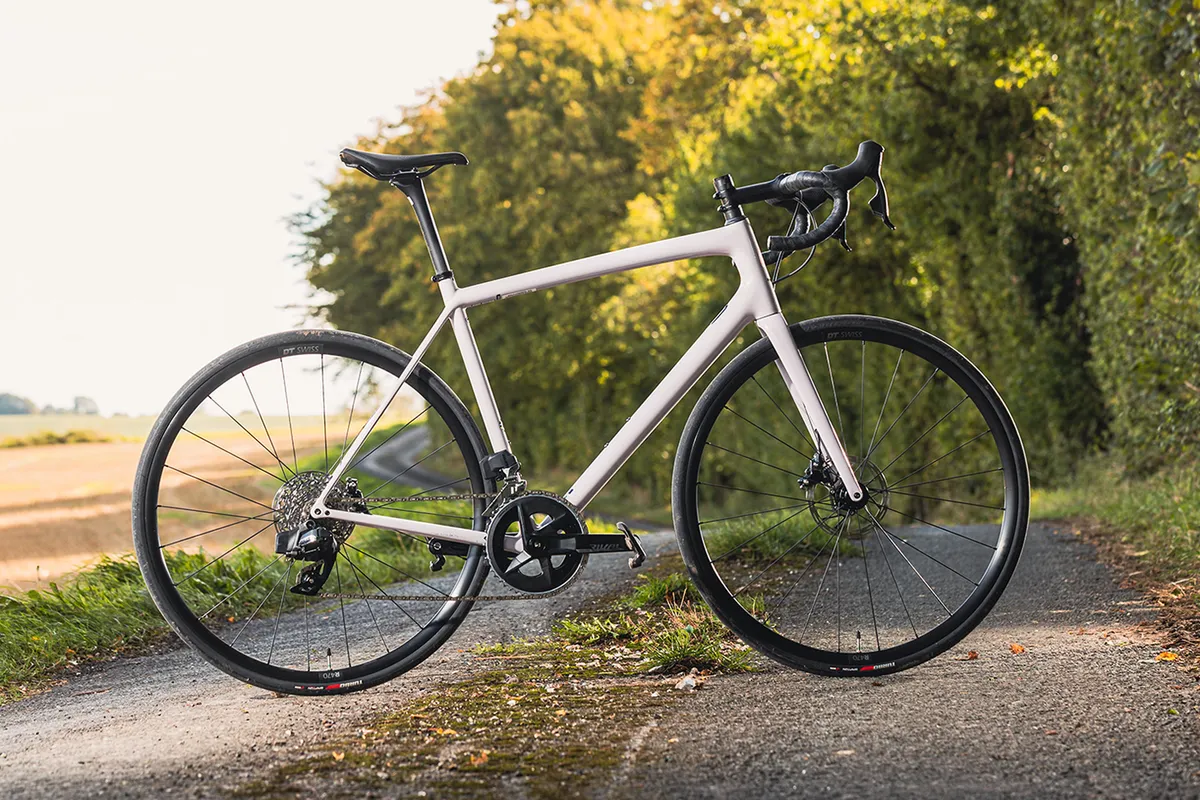
- £4,500 / $5,000 / €5,400 / AU$6,900 as tested
- Weight: 8.2kg (58cm)
- Pros: Rapid handling, but stable ride quality; climbs well
- Cons: Wheelset and tyres limit performance
Although the Comp spec of the Specialized Aethos weighs over 8kg, the top-spec S-Works Aethos brings that down to a claimed sub-6kg, definitely earning a place on our lightweight bikes list. The classic frame profile with round tubes goes against the aero-is-everything modern trend.
The Comp uses a lower-spec carbon than the S-Works, but still has a 700g frame weight and comes with a SRAM Rival AXS groupset and lower-priced, heavier wheels. These make it feel less skittish than the S-Works bike, while it retains its rapid handling and shares its geometry with the Tarmac SL7. It still feels light when climbing too.
- Read our full Specialized Aethos Comp review
Specialized Tarmac SL8 Pro (SRAM Force AXS)

- £8,000 / $8,500 / €8,500 as tested
- Weight: 7.46kg (56cm)
- Pros: Quick; low weight; lively ride; nearly spotless build
- Cons: High cost; brake rotors are cacophonous in the wet
The Specialized Tarmac SL8 Pro matches much of the performance of the S-Works Tarmac at lower cost.
It’s still expensive, but the frameset and spec are brilliant, making the Tarmac SL8 Pro (SRAM Force AXS) a pulsating and rapid ride.
Wider tyres and quieter disc brake rotors would be good. However, if you want an excellent climbing bike that’s fast on the flat too, the Specialized Tarmac SL8 Pro ticks the boxes.
- Read our full Specialized Tarmac SL8 Pro review
Trek Émonda ALR 5
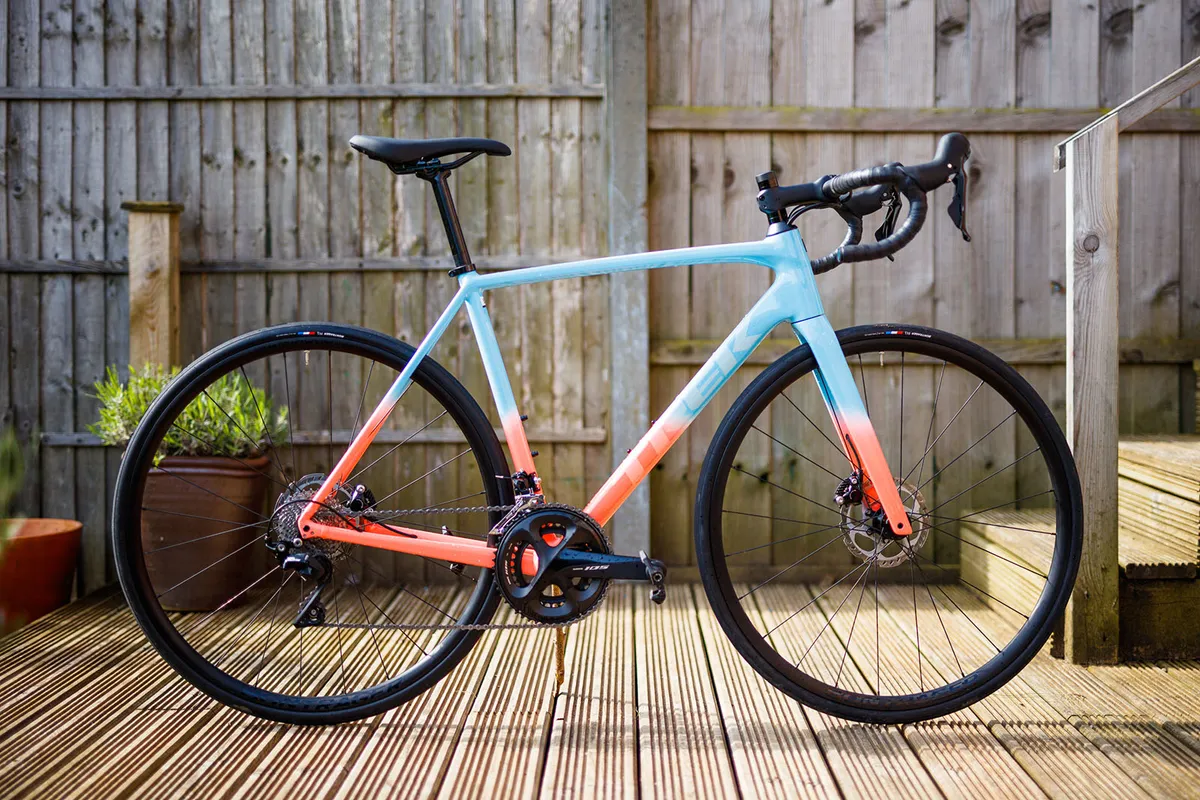
- £2,325 / $2,300 / €2,325 / AU$3,500 as tested
- Weight: 9kg (56cm)
- Pros: Deft handling; high ride quality; simple to customise; wide size range
- Cons: Sluggish tyres and wheels
Trek has discontinued the carbon Émonda , but its specialist climbing bike lives on in alloy.
The entry-level Émonda ALR 5 is only marginally heavier than the old mid-range carbon model, while delivering a smooth ride and assured handling.
Although the tyres and wheels feel disappointingly slow on a race bike, the rolling stock will be easy to upgrade. As will other components because Trek hasn't saddled the Émonda ALR with too much proprietary tech.
- Read our full Trek Émonda ALR 5 review
Wilier Verticale SLR Dura-Ace Di2

- £11,000 / $14,500 / €12,200 as tested
- Weight: 6.8kg (XL)
- Pros: Wonderful climbing and descending; free or cheap component changes at purchase
- Cons: Short of straight-line speed; high RRP; power meter not included
The Wilier Verticale SLR Dura-Ace Di2 is the Italian brand's dedicated climbing bike. It ascends as well as you'd imagine for a bike which is almost UCI-illegal, even in size XL.
The geometry and V-Bar handlebar are also optimised for inclines. Handling isn't as fast as some race bikes, but this makes the Verticale SLR a stable descender.
We like how it's free to switch the handlebar to your preferred width and you can swap the seatpost for a small fee.
However, the omission of a power meter on a £11,000 / $14,500 bike is unforgivable.
- Read our full Wilier Verticale SLR Dura-Ace Di2 review

What we've included (and what we haven't)
This buyer's guide features lightweight bikes at a range of prices, reviewed by BikeRadar and having scored at least four stars in our testing.
While lighter bikes may be available (including custom builds and different models within a given manufacturer's range), these are bikes we have tried and tested, and can confidently vouch for as a result.
Why you can trust BikeRadar
BikeRadar has been an authority on bikes and cycling tech since its inception in 2007, delivering the world’s best riding advice.
We have experts testing all types of bikes, parts, clothing and accessories, from road, mountain and gravel bikes to commuting, bikepacking and electric bikes.
Our reviews are always editorially independent – with no exceptions. Our reviewers comprehensively test all products in the real world, always reflecting on performance, value and the wider market when delivering their verdicts and review ratings .
We have more than 15,000 product reviews available at your fingertips, as well as expert buying, maintenance, training, skills, health and fitness advice.
Our annual Bike of the Year test is an industry benchmark and the BikeRadar team consists of some of the most experienced riders and testers in the business.
Buyer’s guide to climbing bikes
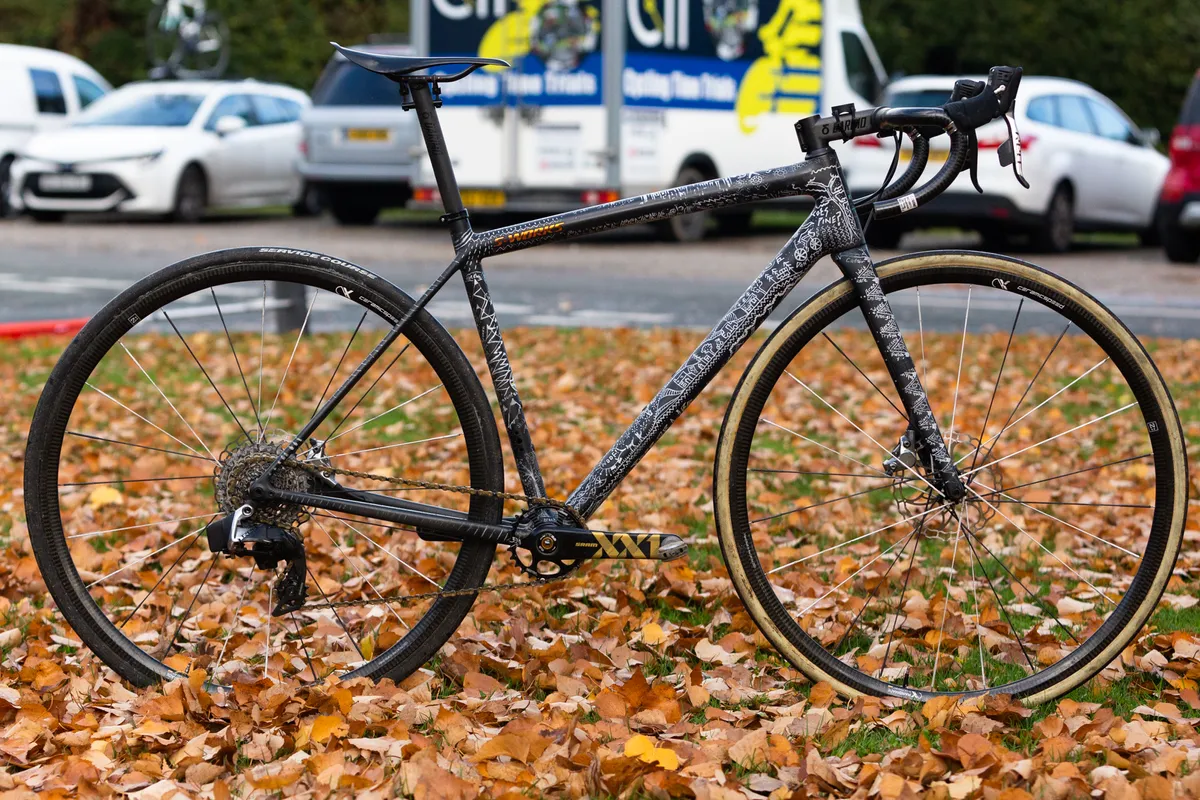
It perhaps goes without saying, but when you’re riding uphill, gravity is always trying to pull you back down.
For this reason, hill climbers will often lose bodyweight before the season and shave grams from their bike and equipment . Some hill-climb obsessives do this literally .
Therefore, if you want to ride uphill faster , or simply make the hills a little easier, a lightweight bike helps a lot.
The only issues are that high-end, lightweight bikes and parts can be eye-wateringly expensive, and the weight-weenie bug can be hard to shake once you get started. However, some of the best road bikes under £3,000 are good for climbing.
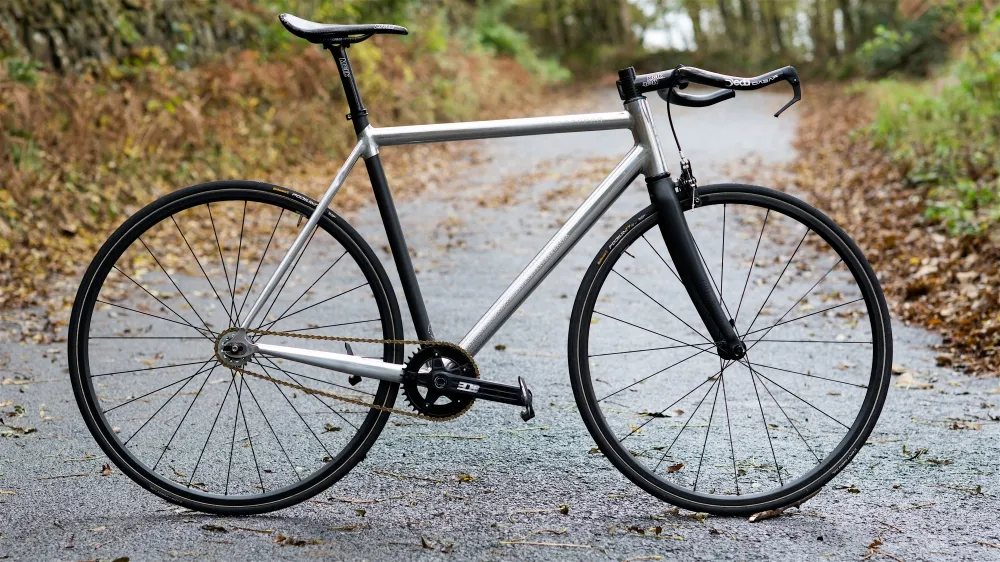
Cheaper still is improving your power-to-weight ratio . You can do this by becoming more powerful at the same weight or losing weight through cycling and maintaining power.
Top-quality carbon fibre is prized for its incredible stiffness-to-weight ratio, and rightly so – this is the reason it’s used in Formula One. If you can afford it, the lightest bikes and parts will almost always be made out of high-end carbon fibre.
At the lower end though, good aluminium is competitive with, or even better than, cheap carbon fibre. That applies not just to weight and stiffness, but also ride quality and strength.
The very last of those characteristics is also a general worry for ultra-lightweight carbon fibre frames and parts. You have to be very careful about sticking to recommended weight, torque and clamping specs, or else it’s very easy to break these feathery items.
Aero vs. weight for climbing
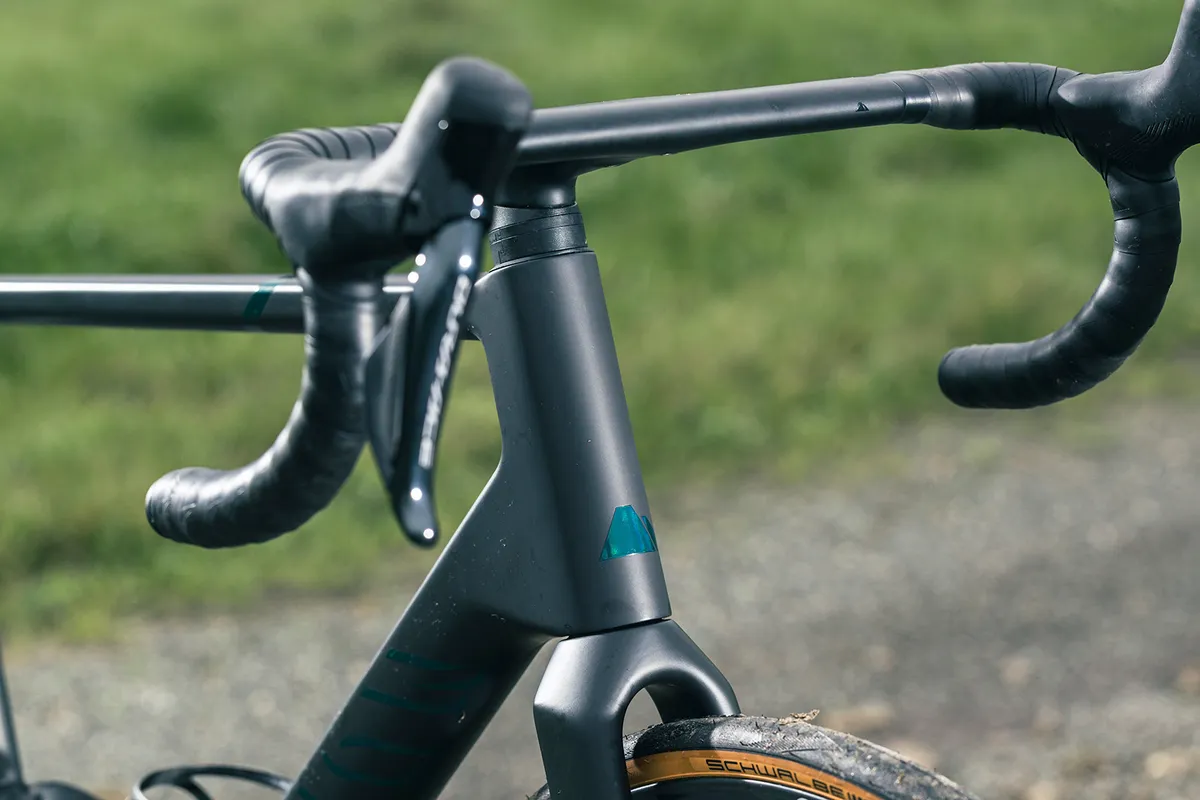
Until fairly recently, climbing bikes made no concessions to aerodynamics, leaving drag-reduction to the best aero road bikes . But with the rise of computer modelling, on-bike aero sensors and other advanced testing techniques, this has all changed.
Even dedicated climbing bikes are now launching, with brands touting their aerodynamic efficiency.
True hill climb aficionados will no doubt be tearing their hair out at this point, exclaiming ‘anything under 10 per cent isn’t even a proper hill anyway!’. But if you want to go fast, aero always matters, regardless of the gradient.
It's true that aerodynamic drag becomes a smaller part of the equation as gradients increase in severity. However, the absolute amount of air resistance you experience remains the same for any given speed.
On top of that, the power to overcome any increase in air resistance is proportional to the cube of speed. So, if you want to ride your bicycle twice as fast, you’ll need eight times more power to overcome the extra drag force, unless you can reduce your aerodynamic drag.
In an ideal world, then, you want a bike that’s both lightweight and aero for smashing hills.
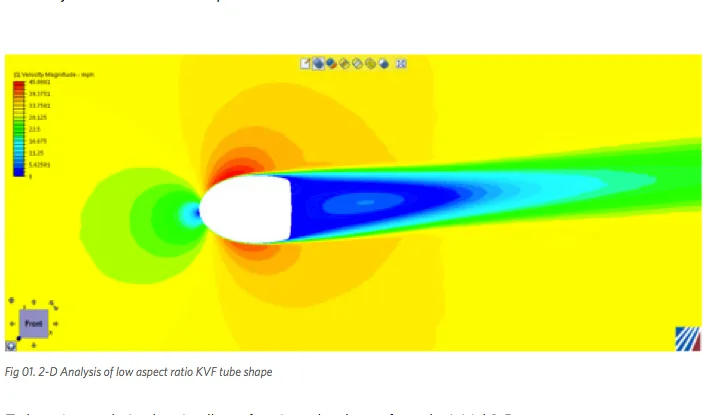
"Weight weenies should be Crr weenies"
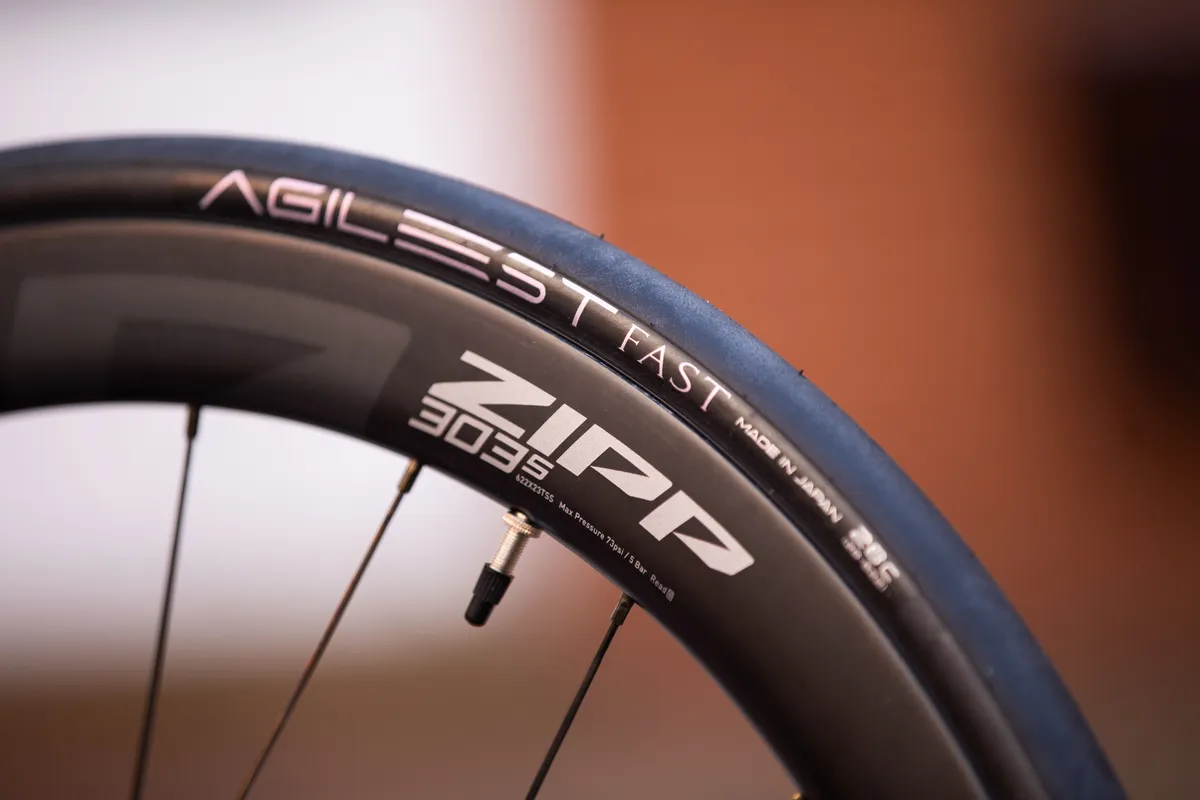
So said Robert Chung, Professor and Theoretical Mathematical Demographer at the University of California-Berkeley. Chung is perhaps most famous for devising the ‘Chung Method’ of calculating aerodynamic drag, but he also reminds us of the importance of not ignoring rolling resistance.
Using a power equation for wheeled vehicles (such as the one found at www.kreuzotter.de), he showed that even a relatively small difference in rolling resistance (Crr stands for 'coefficient of rolling resistance') can be worth as much as large changes in weight, even on steep gradients.
Chung's graph plots the difference in Crr between Continental’s GP4000S II and GP5000 tyres in terms of the equivalent efficiency found through weight loss on different gradients.

On a flat road, it’s clear that even a relatively small decrease in rolling resistance is worth more than practically any increase in weight.
What’s really interesting to note though, is that changing from a GP4000 to a GP5000 is still worth more than 500g of extra mass even on a 10 per cent slope.
Yes, that’s right; the small difference in rolling resistance between two of the best road bikes tyres can have a greater effect on your efficiency than 500g of extra weight even on a 10 per cent slope.
That equivalent mass penalty only increases as the gradient gets shallower. On a six per cent slope, the difference is equivalent to a kilogram of extra mass.
The key takeaway is that you shouldn’t just look at weight figures when shopping for tyres. The differences in rolling resistance between tyres will be worth far more to your climbing speed than any minor weight variations.
Gearing and cadence when climbing

Some riders apparently enjoy using singlespeed or even fixed-gear bikes for climbing hills . But most people are going to want bike gears .
For a long time though, back in the days when riders only had five or so cogs on their cassette to choose from, gears such as 42×21 were considered adequate for climbing mountains.
Thankfully, though, things have moved on and we now have access to compact/sub-compact chainsets , long-cage rear derailleurs and much larger bike cassettes .
Used together, these can allow practically anyone to spin up steep climbs at a comfortable cycling cadence , rather than turning them into a series of leg presses.
Muscling up a steep hill in a massive gear might feel heroic, but it’s probably slower and it’s costing you more energy too, as anyone with a power meter will be able to attest to. These days, even the pros know you need to gear down when the road goes up .
Rim or disc brakes
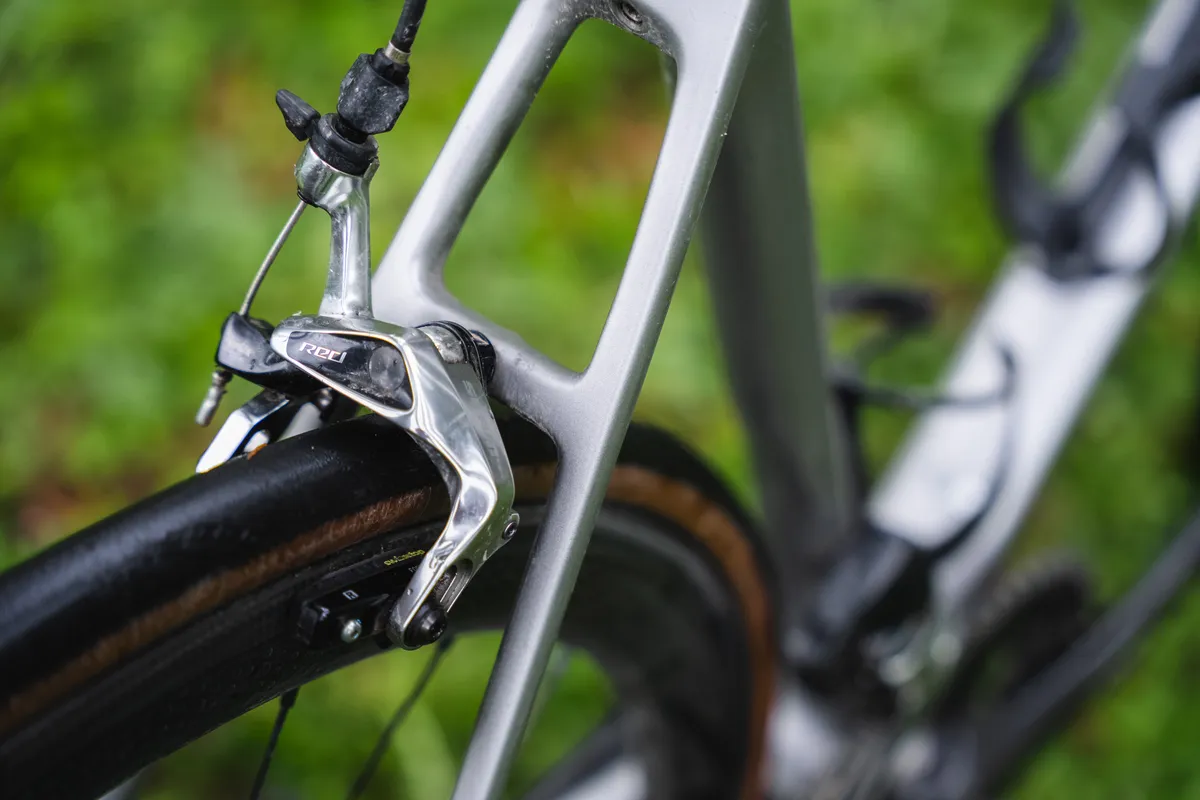
Another thorny issue. In our opinion, there are two answers to the bike brakes debates – a simple one and a nuanced one.
The simple answer is that rim brakes are, generally, lighter, and therefore are better for climbing bikes .
There's a more nuanced answer, however. While disc-brake equipped bikes generally come with a weight penalty (though this is becoming harder to measure because, despite what we wrote in 2017 , new high-end rim brake road bikes are uncommon), the advantage of better braking will be keenly felt on the way down the hills.
If the only thing you care about is going uphill as fast as possible, then rim brakes could still be the right choice. Otherwise, the advantages of road disc brakes might tip the balance.
Share this article

Senior technical writer
You may also like
Bikeradar newsfeed, best endurance road bikes in 2024: our pick of the best bikes for speed and comfort, best cycling shoes 2024 | 18 top-rated road cycling shoes for every budget, a complete guide to front derailleurs: types, mounts and compatibility explained, best road bikes 2024 | our pick of the best endurance, race, women’s and entry-level road bikes.

- Terms & Conditions
- Subscribe to our magazines
- Manage preferences
- 2025 Tour de France, Tour de France Femmes presentation - Live
Best lightweight bikes 2024: Our pick of the lightest climbing bikes
The best lightweight bikes offer speed on the flat plus faster climbing on the steep stuff

Best lightweight bikes: quick list
How to choose.
The best lightweight bikes can now give you a great mix of low-weight and aerodynamic performance.
Gone are the days when you had to sacrifice efficiency and on-the-flat speed for an easier ride in the hills, with many lightweight bikes featuring among the best road bikes . The majority of these bikes and the components with which they're fitted give you aero benefits while still often coming close to or below the 6.8kg weight limit that the UCI imposes on its sanctioned competitions.
After a few years of disc brake-equipped race bikes being a little on the heavy side, it now seems the best race bikes are heading back down around the UCI weight limit mark whilst still retaining aero features and designs. The exception below is the Specialized Aethos, where aero gains have been sacrificed for out-and-out low weight. Specialized has carried over design features of the Aethos to the new Tarmac SL8 though, where you do get both.
The low overall weight of the best lightweight bikes is despite the general shift to disc brakes , which still weigh more than their rim brake counterparts. Bike brands have learned how to use the properties of disc brakes, and the thru-axles with which they almost always come, to build a lighter frame that's still as stiff as one using rim brakes. There are fewer physical constraints on disc brake wheel rims, with the best lightweight wheels saving even more weight.
Below, we run through our pick of the best lightweight bikes available today, followed by a short buyer's guide on what to look for when choosing.
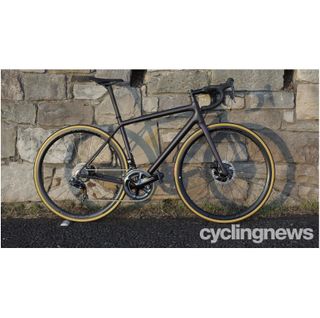
Best non-aero lightweight bike
The Aethos achieves a 6.1kg weight in S-Works guise, although that means round tubes and external cables.
Read more below
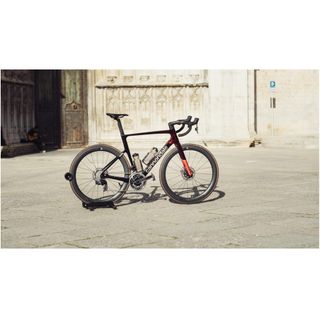
Best all-rounder
The new SuperSix EVO is more aero than its predecessor and the top spec LAB71 frame is lighter too.
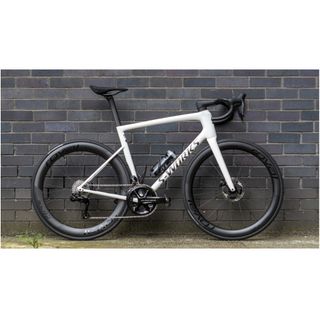
Best for ride comfort
The latest Tarmac SL8 manages to be lighter and more comfortable than the SL7 whilst being faster too.
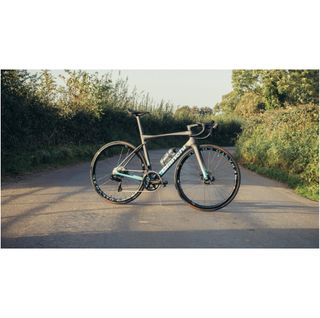
Best Italian lightweight superbike
The new Bianchi Specialissima RC is more aero and more integrated, as well as lighter at 6.56kg.
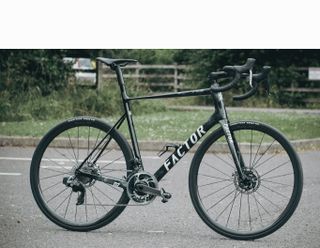
Best for hill climbing
A seriously light, springy and aggressive hill climbing machine with impressive aerodynamics.
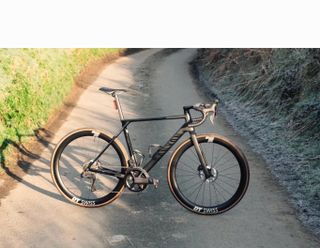
A cheaper option for a light-ish lightweight bike, the Canyon Ultimate CF SLX 8.0 offers impressive performance with a quality spec.
Best lightweight bikes
You can trust Cyclingnews Our experts spend countless hours testing cycling tech and will always share honest, unbiased advice to help you choose. Find out more about how we test.
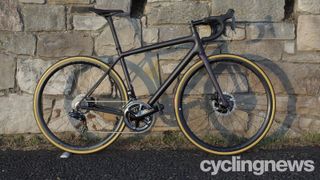
1. Specialized S-Works Aethos
Specifications, reasons to buy, reasons to avoid.
Rather than aiming for a bike that fitted conveniently with the UCI's rulebook, Specialized went all-in for a lightweight machine with the Aethos, resulting in a frame weighing just 585g +/- 5g for a size 56cm, and a full build, here with Shimano Dura-Ace, that weighs just 6.1kg.
Specialized has also majored in building a frame that's stiff in all the right places but shunned the lightweight/aero idiom with round tube profiles to keep the frame's weight to a minimum, resulting in what's claimed to be the lightest disc brake frameset available. It's also a pretty good-looking one.
The brand has bolted as many lightweight components as it can muster onto the S-Works model, with a set of 1,265g Roval Alpiniste CLX II wheels, a 9g 4iiii power meter and titanium bolts everywhere. It has retained a threaded bottom bracket though.
Geometry is the same as the Tarmac SL8 (see below), resulting in a ride that's as fast downhill and through corners as it is when the road tilts upwards.
Specialized Aethos early review
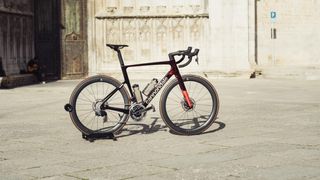
2. Cannondale LAB71 SuperSix Evo
A happy conjunction has seen Cannondale update its SuperSix Evo and release its premium LAB71 series bikes together at the start of 2023. The result is a fourth generation of Cannondale's lightweight/aero machine that's, well, more lightweight and more aero.
The LAB71 SuperSix Evo hits the UCI 6.8kg limit, with a painted size 56 frame weighing 770g. Although the geometry hasn't changed - no bad thing - aero tweaks have saved 12 watts. Cannondale incorporates a battery slot ahead of the bottom bracket, allowing it to fit a skinnier seatpost, for example. Like the Aethos, the SuperSix Evo also now sports a threaded bottom bracket.
Our first ride on the SuperSix Evo 4 around Girona displayed the bike's all-around characteristics: light on the climbs, fast on the flat, great handling on descents, lively when you want it to be but mellow when you ride easy.
Cannondale SuperSix Evo 4 first ride review
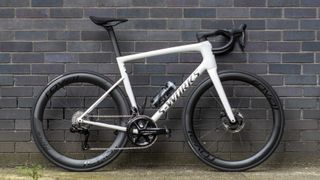
3. Specialized S-Works Tarmac SL8
The latest version of Specialized's hugely popular Tarmac retains the fantastic efficiency and handling of the SL7 while shedding weight. It's also more aero, thanks to the one-piece cockpit on higher spec models and the 'Speed Sniffer' headtube.
At the rear, Specialized has slimmed things out, using its expertise from the Aethos to reduce the seat tube's width. It says that aerodynamics are less of a priority here than at the front of the bike and that the skinnier sections add extra compliance.
With a size 56 frame weighing a claimed 685g, a full build at S-Works spec level has a claimed 6.8kg weight ready to ride, complete with pedals and bottle cages. Our short first ride suggested that the Tarmac SL8 is fast both on the flat and when climbing, with great power transfer.
Although the price tag is still hard to swallow, it's actually cheaper than its predecessor. There's not much depth to the range for those looking for a cheaper build though.
Specialized S-Works Tarmac SL8 first ride review
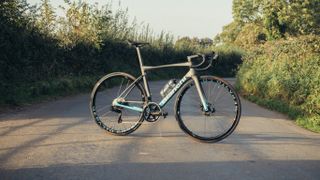
4. Bianchi Specialissima RC
Our expert review:
Bianchi has reworked the Specialissima, with improved aerodynamics and a weight that now sits at 6.56kg for a size 55 in top RC spec.
As with the Tarmac SL8, the front end is where the aero treatment has been greatest, with a one-piece cockpit and nose cone to the head tube, while weight is saved at the rear. Bianchi claims that the Specialissima will be faster than its Oltre aero bike at a relatively shallow gradient of between 4 and 6 per cent.
With its weight, it's no surprise that we found the Specialissima a formidable climber. Its aerodynamics also make it feel fast on shallower climbs and on the flat, while the inertia feels lower than when riding an aero bike.
Bianchi's wheels weigh a claimed 1,380g and the bike rolls on 26mm tyres, both of which help, although the tyres don't provide the feeling of cornering confidence or the comfort of wider options. The ride feels slightly jittery and the Specialissima feels more generic than Bianchi's heritage would indicate.
Bianchi Specialissima RC review
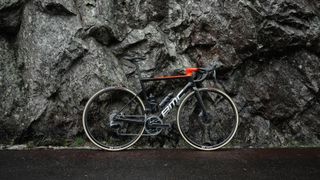
5. BMC Teammachine SLR 01
While the latest Teammachine R aero road bike grabs the headlines with its Formula One-derived tech, BMC will continue to sell the Teammachine SLR alongside it as a lighter-weight climber's bike.
Dropping the seat stays for improved comfort and aerodynamics is now a bike-design must-have, but the BMC commitment to progressive bicycle design is such that it debuted this feature back in 2010 on the Teammachine.
The latest generation Teammachine SLR inherits that bike's DNA but with an integrated cockpit and the usual lighter, faster, stiffer, more compliant combination. It's more aero thanks in part to the bottle cage design, but also the ICS carbon cockpit, although this only comes in two widths and six-length options, limiting adjustability.
BMC's D-shaped seatpost adds comfort - you can fit 30mm tyres if you want more. The frame design offers impressive power transfer thanks to its chunky down tube and bottom bracket, while the stack and reach are in the middle of the pack, making for a not-too-racy ride.
BMC Teammachine SLR review

6. Factor O2 VAM
The Factor O2 VAM Disc can easily hold its own against the segment's best road bikes. It's seriously light, more than fast enough on the flats and descends with a level of confidence. Sure, there are faster bikes out there but unless you're riding at the highest level of the sport or testing it back-to-back against its rivals in a controlled environment, those nuances are imperceptible to us mere mortals.
We said most people would probably be better served by the brand's more aero Ostro model, but if you are in the market for a stunning, lightweight bike that makes you feel sprightly every ride, the O2 VAM may be just the ticket.
We've completed our review of the latest generation Factor O2 VAM which launched in late 2023. Factor claims that it improves on its predecessor's aerodynamics by 12 watts in its wind tunnel tests and that it is 35 per cent stiffer than the previous generation bike.
Factor O2 VAM review
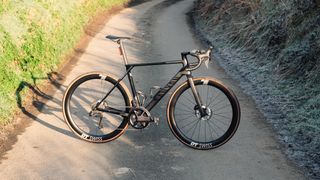
7. Canyon Ultimate CF SLX 8.0
The fifth generation of the Canyon Ultimate is available in three guises. We tested the SLX with Canyon's mid-spec carbon, but head up to the CFR frame and you can expect a weight of around 6.3kg - and it's still not as expensive as most of the bikes here.
Our test bike came with Ultegra 12-speed (with a 4iiii power meter) and DT Swiss ARC 1400 Dicut db wheels but still weighed in at a featherweight 7.4kg with pedals. All specs get the same adjustable-width bar/stem as used on the Canyon Aeroad, there's a D-shaped seatpost and 32mm tyre clearance. There is also a wide range of sizes available, with smaller frames coming with 650b wheels for similar handling to the larger sizes which run on 700c wheels.
We found that the Ultimate shone uphill, particularly when things got steep, with a stiff frame and weight distribution that gets you more over the pedals than some other options. With aero flourishes, it ticks along happily on the flat too, although the handling is on the edgier side.
Canyon Ultimate CF SLX 8.0 review
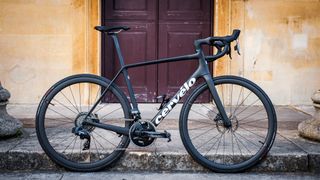
8. Cervelo R5
The Cervelo R5's latest makeover has resulted in a 16 per cent reduction in frame weight to a claimed 703g. It is also perhaps the only bike to have got less stiff in its latest iteration, Visma-Lease a bike riders demanding more comfort. Although pedalling efficiency hasn't decreased, the new headtube and fork design are claimed to increase compliance.
Otherwise, the R5 has the classic looks of a road bike, even as other bike makers have moved on to dropped stays, and despite the slightly retro looks, this is still a high-performance bike.
The frame is electronic groupset compatible only and tyre clearance is now 34mm. Carbon wheels come from sister brand Reserve, with a claimed weight of 1,300g a set.
Cervelo R5 launch story
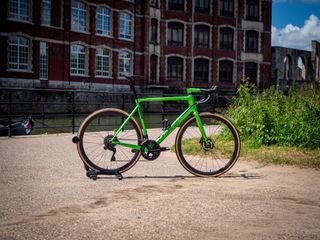
9. Wilier Verticale SLR
Replacing the Wilier 0 SLR, the new revamped Verticale SLR is an impressive lightweight all-rounder, stiff and punchy with aggressive geometry and reassuringly surefooted stability.
The Verticale SLR doesn’t quite have the all-day comfort of the Factor O2 Vam, nor is it quite as fast on the flat as the Wilier’s own Filante. It isn’t even the most lightweight bike on the market, with both the Tarmac SL8 and Giant TCR sitting at a similar weight point without pedals. Despite this though it still packs a punch, offering a nimble and eager acceleration, excelling particularly in both steep technical ascents where its stiffness and light weight are particularly beneficial and instilling confidence on fast twisting descents. It is an extremely enjoyable way to spend a fast afternoon.
A bike that combines modern performance with a traditional aesthetic (notwithstanding the green paint job that surprisingly grew on me), the Wilier Verticale SLR stacks up well against other lightweight bikes and blends high performance with a playfulness that you don’t often get in such seriously competitive bikes.
Wilier Verticale SLR review
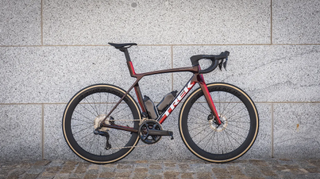
10. Trek Madone Gen 8 SL7
Skinnier, lighter, faster and more aero than its predecessors, Trek’s new Emonda-killing Madone Gen 8 is claimed to be one of the best ultra-lightweight climbing superbikes, and the new upgrades certainly point to it being a formidable climber.
Riding the Ultegra Di2-equipped SLR 7 we found it blisteringly fast on the flats and exceptional on descents, with the IsoFlow system significantly improving the ride quality by maintaining a connection to the road without compromising comfort, a distinct improvement over earlier models. In a nod to gravel versatility, the Madone has upped the tyre clearance from 28mm in previous iterations to an impressive 33mm.
In the top-spec SLR 9, Trek has managed to hit the 7kg mark, integrating an exceptional stiffness we couldn’t have dreamt of even 5 years ago. It’s a great all-rounder as a race bike, bridging the gap between the needs of some of the best of there world’s athletes and normal everyday enthusiasts.
Read our review of the Trek Madone Gen 8 SL7
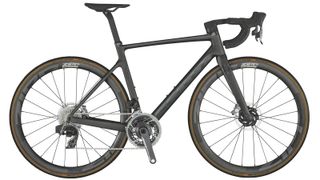
11. Scott Addict RC Ultimate
The Addict RC Ultimate unsurprisingly sits at the top of Scott's lineup. The frameset, which has been ridden by Roman Bardet and the rest of the DSM team, is built from Scott's HMX SL Carbon and forms aerofoil tube shapes for improved aerodynamics. Following the aero trend, Scott has also completely hidden all cables within a Syncros Combo Creston iC cockpit.
The Ultimate spec model comes with a pick of the best road bike components and features an SRAM Red AXS groupset (including power meter), Zipp 353 NSW wheels and Syncros carbon finishing kit. If the heavy price tag of the Ultimate is off-putting, Scott offers the same frame in a range of build specs down to mechanical Shimano Ultegra 11-speed to cater for more reasonable budgets too.
Check out our Scott Addict RC 15 review
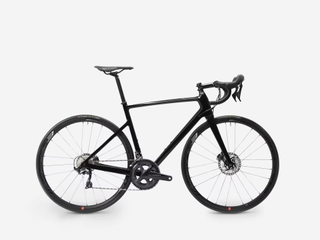
12. Van Rysel EDR CF Ultegra Disc
A touch over the UCI weight limit of 6.8kg at 7.7kg, the Van Rysel Road Bike EDR Ultegra Disc still offers an impressively lightweight and high performance at a fraction of the cost: perfect for those who want a racy lightweight bike but aren’t bothered about keeping to the UCI’s numbers.
Designed for endurance racing and capable of tackling all conditions, the EDR provides clearance for 30mm tyres for additional comfort across gravel but with a remarkably stiff frame for more aggressive climbing.
As with all Decathlon bikes, the EDR offers a high spec for its low price, featuring a Shimano Ultegra R8000 mechanical groupset with a semi-compact 52/36t chainset and an 11-28 tooth cassette. It also includes the Ultegra hydraulic disc brakes for powerful precise braking, complemented by a Deda cockpit and a Fizik Antares saddle.
The Fulcrum Racing 3 DB tubeless wheels are on the heavier side but do offer both the stability and durability you would expect from an endurance racing bike aimed at tackling both roads and a bit of the rough stuff.
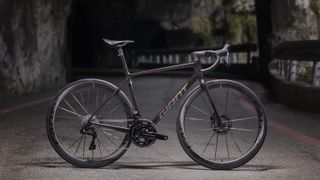
13. Giant TCR Advanced SL
The Giant TCR has been around for a long time now and has taken all manner of victories on the road in this time.
Earlier in the year Giant updated the TCR platform and as we reported at the time time, we felt it was a case of 'If it ain't broke, don't fix it'. The 10th generation TCR received integrated front cabling, as well as lowering weight and becoming more aero. Tyre clearance was also boosted as well as the frame stiffness-to-weight ratio. So think of a programme of improvements across the board rather than dramatic changes.
Giant offers a whole suite of TCR models including a rim brake option and frameset. Specs go right the way up to the top-end Advanced SL models which come with Shimano and Sram builds, something previous bikes didn't do.
We are very familiar with the TCR family and have tested many of the range's previous models , we are currently testing a brand new 10th gen TCR and will include our review here when it is ready.
If you're looking for the best lightweight bike, here are the things that mark out a lightweight bike from alternatives among the best road bikes .
What's the significance of the 6.8kg UCI weight limit?
With the UCI weight limit seemingly stuck at 6.8kg, 'lightweight' has been largely defined at that point, and brands have been able to focus their attention on improving other areas of the bike, instead of simply chasing grams in a race to the bottom (although, naturally, that is still a thing ).
Where aero bikes often have to make compromises on things like ride quality, fit and user-friendliness in pursuit of all-out speed, lightweight road bikes have tended to become the all-rounders of road cycling, with development focused more on these important, but often undervalued characteristics.
Such are the improvements in these areas that many WorldTour pros still choose to ride lightweight bikes over their sponsors' aero-bike offerings , despite the apparent penalty in aerodynamic efficiency.
When does a lightweight bike make the difference?
The data tells us that aerodynamic bikes are faster on flat and rolling courses and on all but the steepest climbs. But let's be honest – the hills are still where it really counts. The important Strava segments are, generally, not boring sections of flat or rolling road, they’re hills, and, on the proper hills (once you dip below about 15kmh), lower weight still beats aerodynamics.
Most of the best lightweight bikes now sport disc brakes. Rim brakes have long been favoured because of the difference in weight, but the gap has narrowed considerably, to the point where disc brake-equipped bikes are regularly skimming or bettering the 6.8kg limit.
Should I choose a lightweight bike over an aero bike?
The good news is that today you don't have to choose - many lightweight bikes are also aero. To keep their weight down, they may not have quite such developed aero features as the best aero road bikes , but many brands' lightweight bikes have aero tube profiles.
Couple that with aero seatposts, integrated one-piece cockpits and deep-section lightweight wheels and you don't have to sacrifice watts on the flat to save watts on the climbs.
On the other hand, there are now plenty of aero bikes that are not that far off the UCI's magic 6.8kg, so you've got even more lightweight choices. A full-on aero bike will still be the more rapid option if you want to ride fast though.
Does a lower weight provide a tangible difference?
Perhaps more crucially, lightweight bikes still retain the power to impress your friends or family members, because weight is tangible. Show them an incredibly expensive aero bike and the first thing they'll do is pick it up and complain that, "It's quite heavy… How much did you say this cost?"
By the time you've started explaining that "over a typical 40km rolling course, performance modelling shows that this bike is 45 seconds faster at 50kph than an equivalent lightweight bike…" they'll likely have lost interest and wandered off, thinking that you got royally ripped off.
A lightweight bike provides an obvious tangible difference, and, sometimes, that provides a greater psychological benefit than the few intangible seconds offered by manufacturers. It's fair to say most of us will still get excited by a really light bike.
Do I need to spend a fortune on a lightweight bike?
Unsurprisingly, carbon fibre dominates the scene for lightweight road bikes. Its unique, tunable characteristics make it the perfect material for making light and stiff bikes that excel when pointed uphill. The downside is that these lightweight frames and components tend to come at an exorbitant cost.
As the great Keith Bontrager once said: "Strong, light, cheap. Pick two." That said, if the UCI limit is what you're looking at, you don't necessarily need to buy the top-of-the-range model these days, which will often actually be lighter than the UCI's minimum weight limit. Some brands are even able to offer builds with Shimano Ultegra that can still hit the 6.8kg benchmark; just don't expect them to be particularly cheap.
Of course, bikes are readily discounted, so it's worth taking a look at our roundup of the best road bike deals to find the best bike-to-price ratio.
Get The Leadout Newsletter
The latest race content, interviews, features, reviews and expert buying guides, direct to your inbox!
Josh is Associate Editor of Cyclingnews – leading our content on the best bikes, kit and the latest breaking tech stories from the pro peloton. He has been with us since the summer of 2019 and throughout that time he's covered everything from buyer's guides and deals to the latest tech news and reviews.
On the bike, Josh has been riding and racing for over 15 years. He started out racing cross country in his teens back when 26-inch wheels and triple chainsets were still mainstream, but he found favour in road racing in his early 20s, racing at a local and national level for Somerset-based Team Tor 2000. These days he rides indoors for convenience and fitness, and outdoors for fun on road, gravel, 'cross and cross-country bikes, the latter usually with his two dogs in tow.
- Paul Norman
MAAP Draft Team Vest review: Lightweight style and speed
'I'm punchy like Pogačar' - 18-year-old neo-pro takes World Championship bronze in second-ever e-race
Cavendish, Girmay, Cordon-Ragot add glitz for Tour de France, Tour de France Femmes 2024 route presentation
Most Popular

IMAGES
VIDEO
COMMENTS
In this article, I’ll guide you through a comparison between the Canyon Ultimate and Trek Emonda; both popular road bikes among cyclists. I’ll walk through the Canyon Ultimate and Trek Emonda models lineup, their specifications, and retail pricing (USD).
Probably the best apples-to-apples comparison for Trek to the Canyon Ultimate would be the Madone. The Emonda and the Ultimate are both well regarded bikes. So you might focus on which bike is best suited for your particular riding style and geography.
Nearly everyone would like to climb uphill faster. Here are the best lightweight bikes as tested by the BikeRadar team.
Skinnier, lighter, faster and more aero than its predecessors, Trek’s new Emonda-killing Madone Gen 8 is claimed to be one of the best ultra-lightweight climbing superbikes, and the new...
Both come with power meters, but the Ultimate CF is considerably lighter (Ultimate is 15.71 lbs. VS the Emonda’s 18.19 lbs). The Ultimate CF runs about $500 more, but does the weight difference justify the extra cost?
Summary. The Trek Émonda SL 5 and Canyon Ultimate CF SL 7 are both carbon frame race bikes with hydraulic disc brakes. The Émonda SL 5 has 700c aluminum wheels, while the Ultimate CF SL 7 has 650c / 700c aluminum wheels, better components, and higher gearing.